After three months of thrashing through winter and spring, Wil gives us his rundown on the 2017 Giant Trance 1
It would be pretty hard to find a mountain biker out there who hasn’t heard of Giant Bicycles before. Indeed many of you reading this right now will have owned one in the past, or at the very least will have several riding buddies that are currently aboard a Giant mountain bike. Travel to any trail centre in the UK on a busy summer weekend, and I challenge you not to spot a Giant logo somewhere either on the trails or in the carpark.
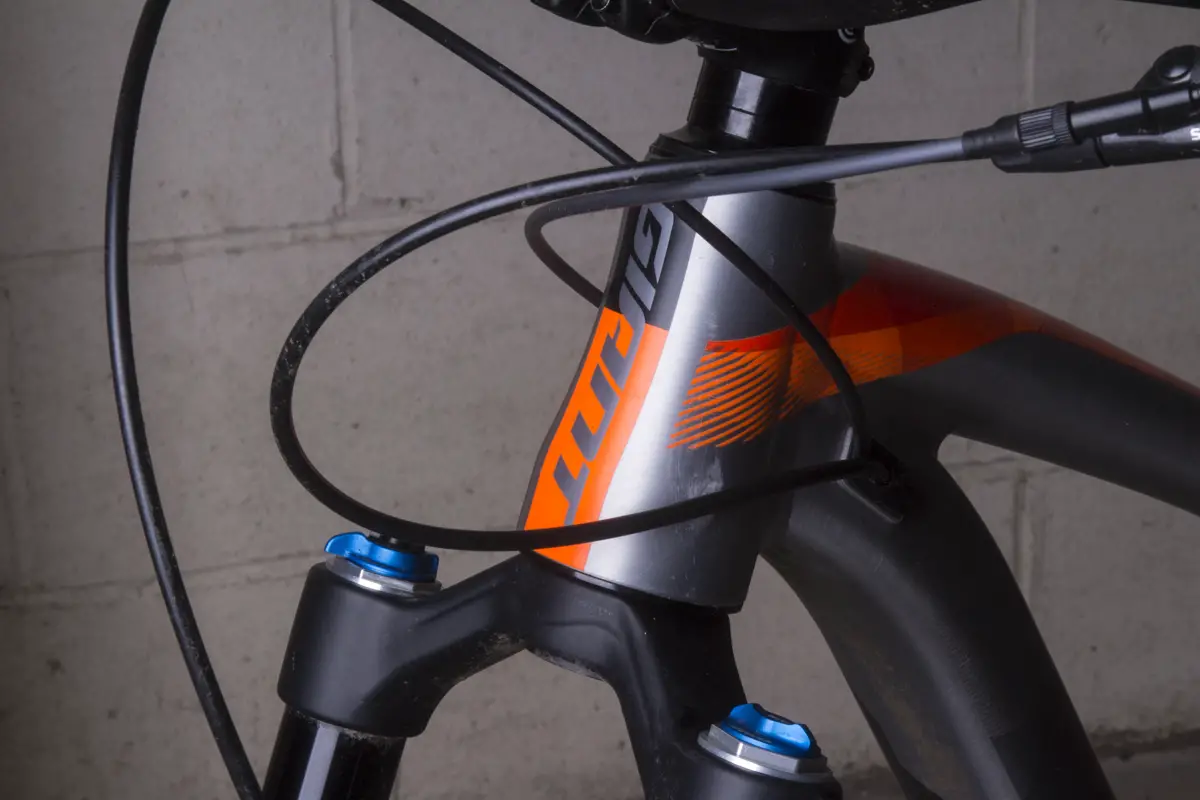
As one of the largest names in the industry, the monolithic Taiwanese company has been manufacturing bikes since as far back as 1972. Starting out as a factory producing frames and bikes for other companies including the likes of Scwhinn, it wasn’t until 1987 before Giant decided to launch its own label. Since then, Giant has grown into the largest bike company in the world, with a truly enormous range of road, urban, cyclocross, leisure, kids’ and mountain bikes of its own, as well as remaining as a huge manufacturer for many other well-known brands out there.
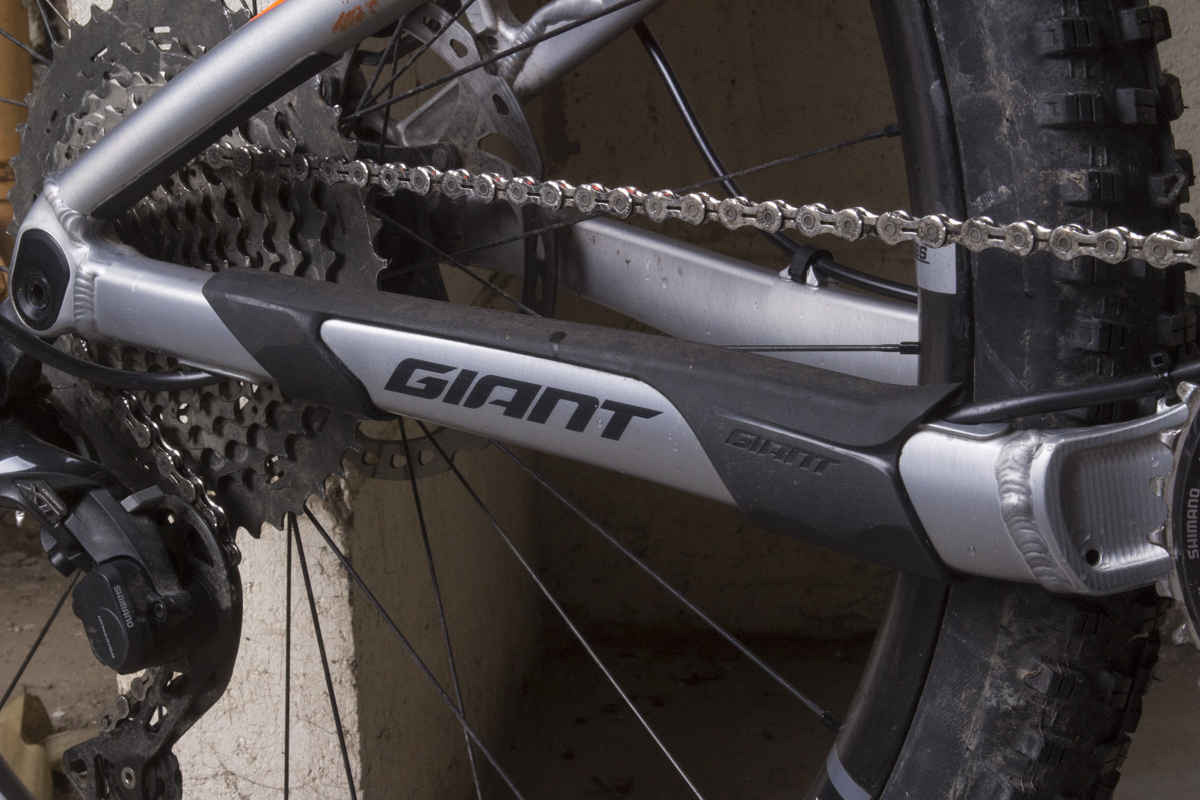
Although Giant has built loads of great mountain bikes in the past, the overall direction of the brand has typically been on producing bikes with a focus on value for money, rather than necessarily pushing the outer boundaries of geometry and frame design. Solid, reliable and well-priced, yes. Cutting edge and full of state-of-the-art proprietary technologies, well, not so much. However, there’s no doubt that it has been this conservative design approach and the ability to deliver value-oriented product that has made Giant so successful over its 40+ year history. After all, when you’re talking about production volumes in the tens to hundreds of thousands of units, your bikes need to have a broad appeal.
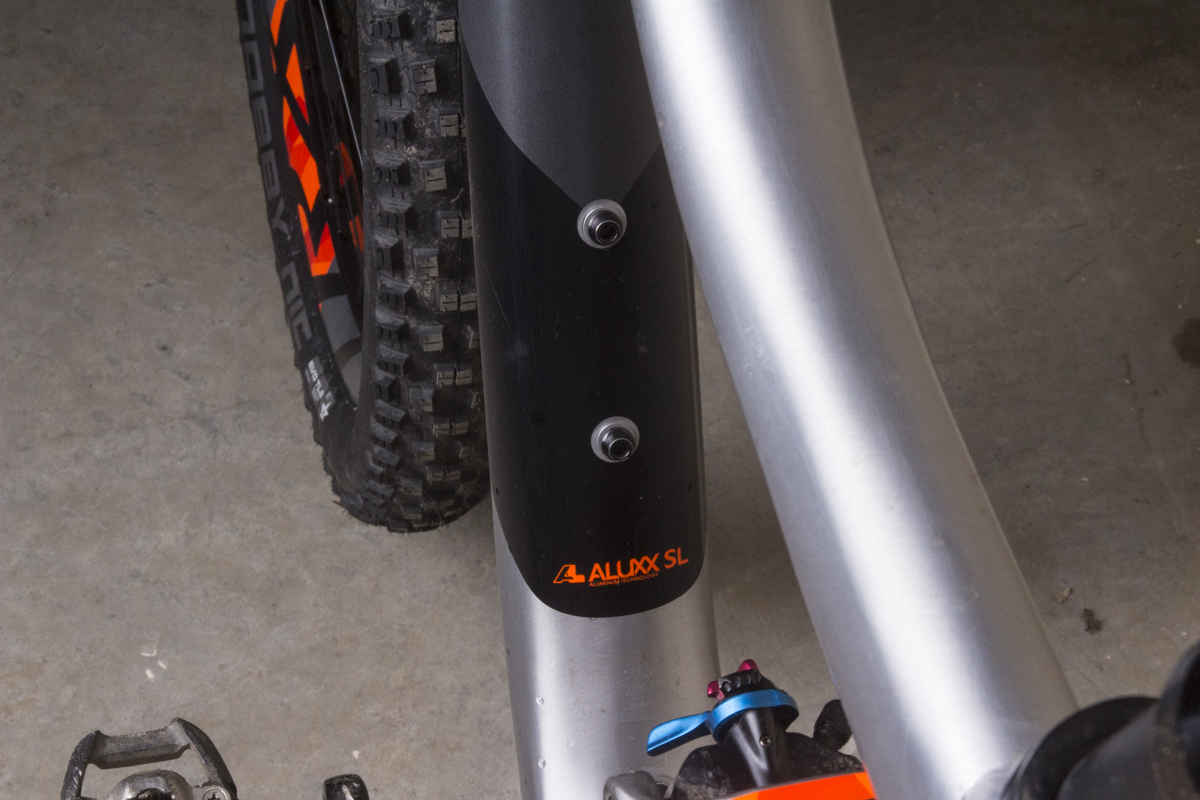
In more recent years however, Giant has been making progress on its mountain bike lineup, with the traditionally conservative Taiwanese brand pushing the design envelope just a little bit further than what we’ve come to expect from it in the past. You could see the beginning of this transition back in 2015 with the release of the current generation Reign all mountain bike – a long travel enduro rig that Barney reviewed as one of the best bikes in its category. Following on from that, Giant’s Liv brand has since rolled out the new Hail, and Hannah has so far had very little but praise for what is arguably the burliest and most contemporary women’s specific mountain bike on the market. At Eurobike last year, we were even impressed by Giant’s new XTC hardtail, which offers 29/27.5+ tyre compatibility and clever dropouts that allow for singlepseed setup in the same chassis – trail-friendly features not usually found in a lightweight XC hardtail.
But perhaps the most significant step in the recent evolution of Giant’s off-road range was witnessed last year, when the brand unveiled the all-new Anthem and Trance models.
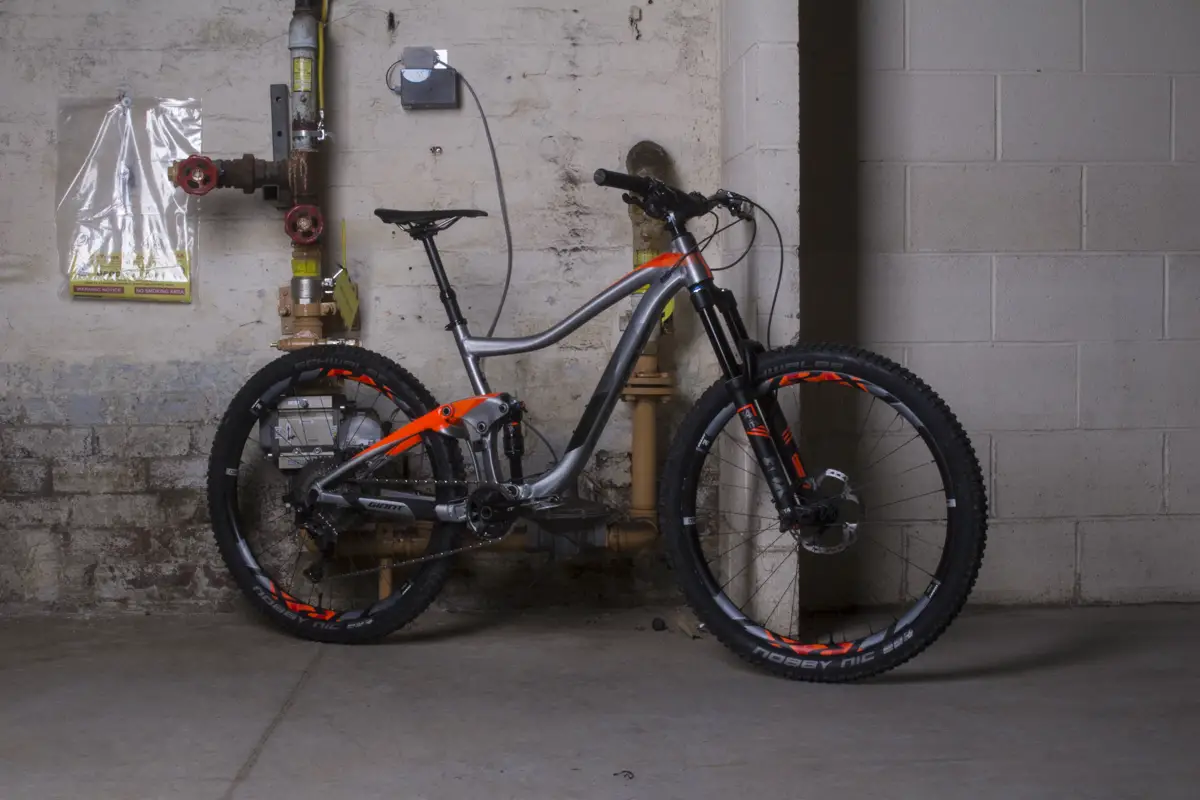
First launched in 2005 alongside the Anthem and Reign, the Trance originally debuted as the everyman’s trail bike. Whereas the Anthem was Giant’s XC race bike, and the Reign was the long-travel all mountain machine, the Trance slotted in between as a tough, versatile and comfortable trail bike designed to cope with long distance riding across a wide range of terrain.
Over the last 12 years, the Trance platform has steadily grown bigger – both in terms of travel and wheelsize – but it still remains as the most versatile full suspension bike in the Giant lineup.
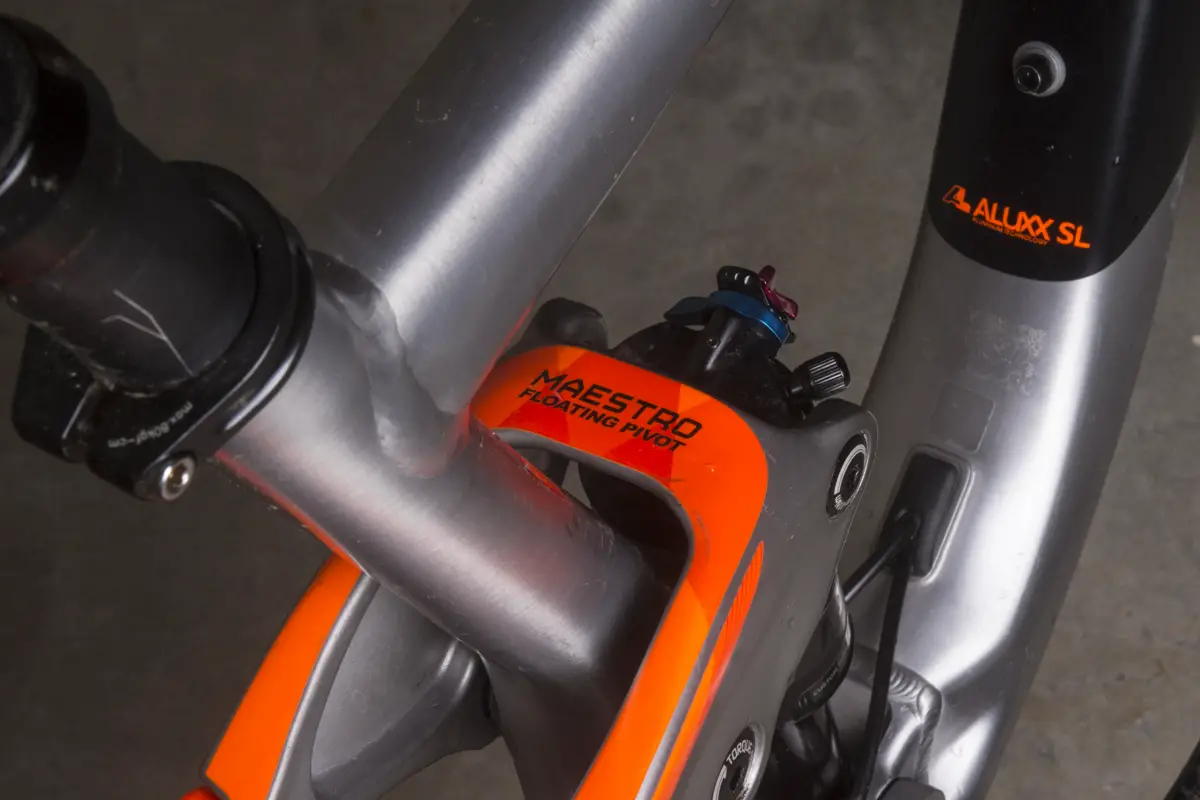
For 2017, the Trance received its biggest and most significant overhaul yet. It’s still built around 27.5in wheels and the Maestro suspension platform like the previous model, and it still features 140mm of rear wheel travel. Put the 2016 and 2017 bikes side-by-side, and they even look the same. But as much as they might appear to be the same thing, there is almost nothing that has remained unchanged between the new Trance and its predecessor.
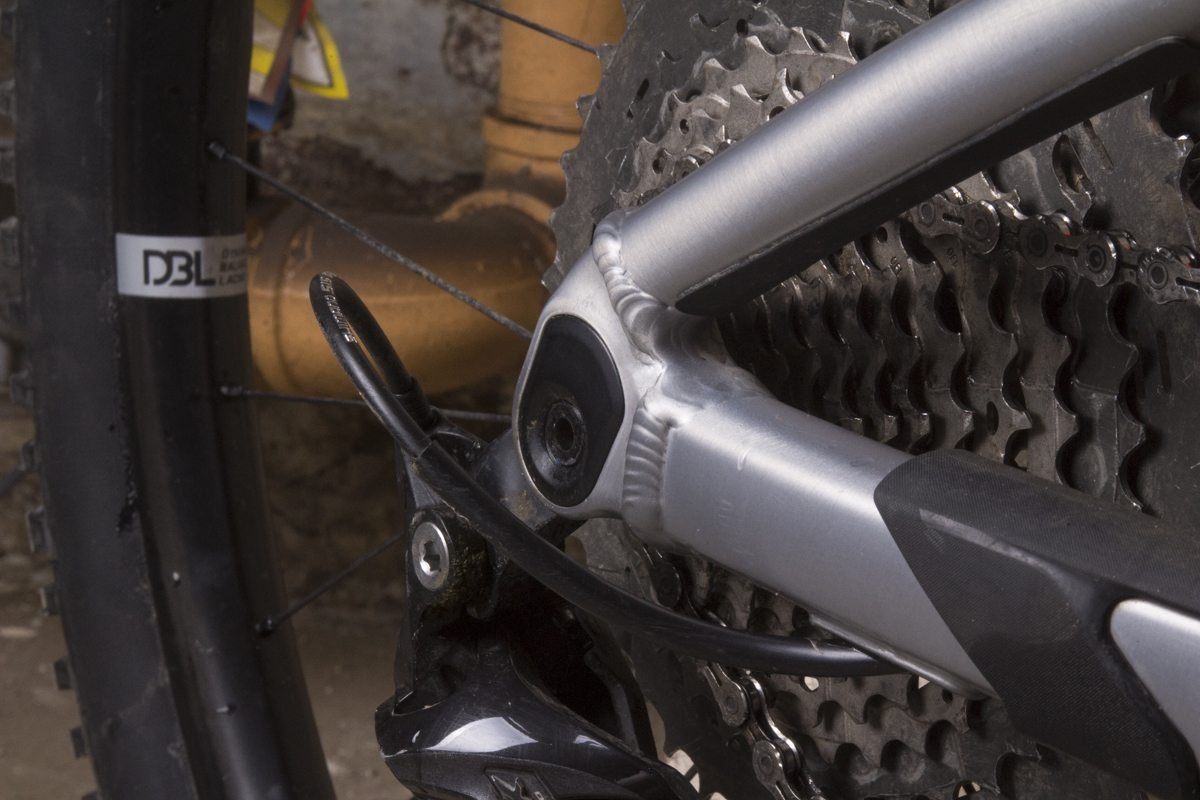
Just like the latest Anthem, the Trance has received an all new frame, new geometry, a new suspension linkage, and the adoption of up-to-the-minute standards including Boost hub spacing and metric shock sizing. It may look similar, but this machine is brand spanking from the ground-up.
With six different models to choose from, the Trance is available in both alloy and carbon frame options. The carbon models (denoted by the ‘Advanced’ tag), upgrade to a lighter carbon front triangle, while using the same alloy rear-end, the same geometry, and the same suspension design.
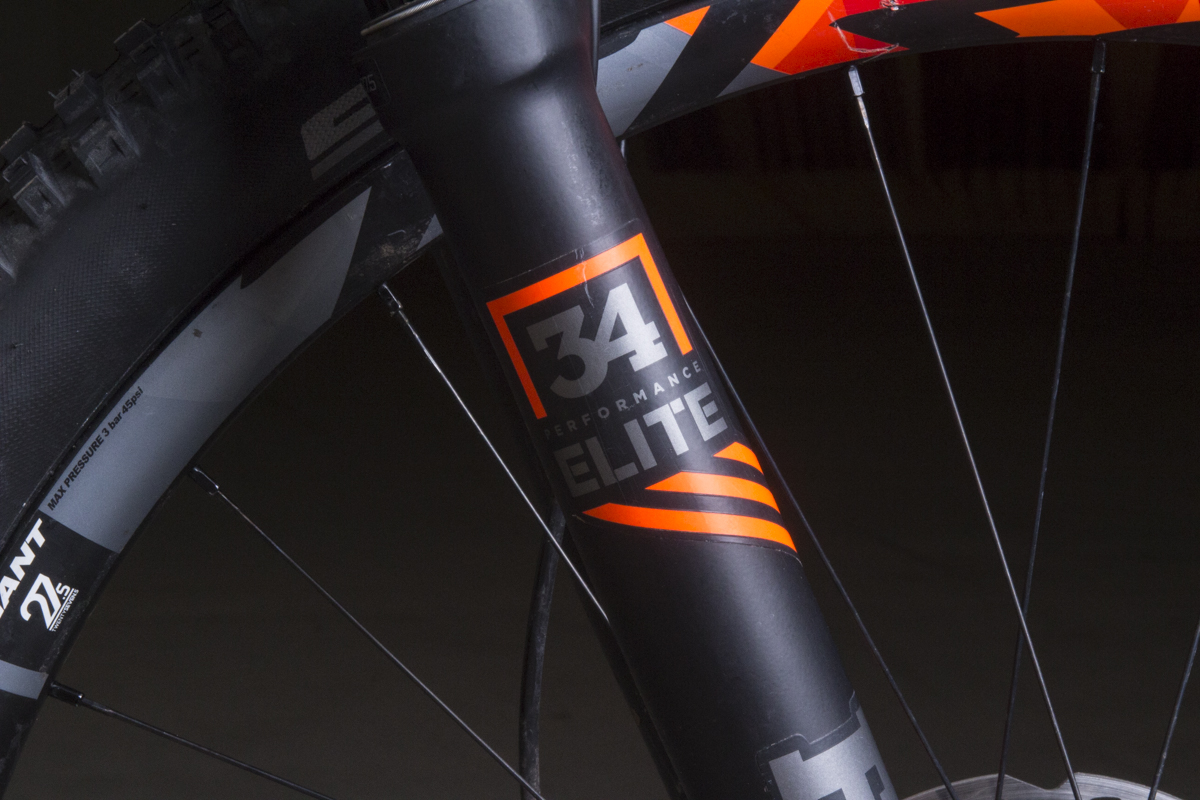
The Trance 1 I’ve been testing sits at the top of the range in the alloy models, with a slick all-black Fox suspension package, Shimano XT 1×11 groupset and Giant’s own carbon wheels. If the £3449 price tag is beyond your budget however, you’ll be happy to know that Giant offer the exact same frameset with several cheaper build kits that start at £1549 for the Trance 4.
Having ridden previous versions of the Trance before, I was particularly keen to swing a leg over the new version to see just how Giant’s improvements would feel out on the trail. I wouldn’t say I was a particularly big fan of those previous iterations, but having recently reviewed (and been thoroughly impressed by) the shorter-travel Anthem, I had high expectations of Giant’s do-it-all trail bike.
Before finding out what it rides like though, let’s take a closer look at some of the key changes on the new Trance.
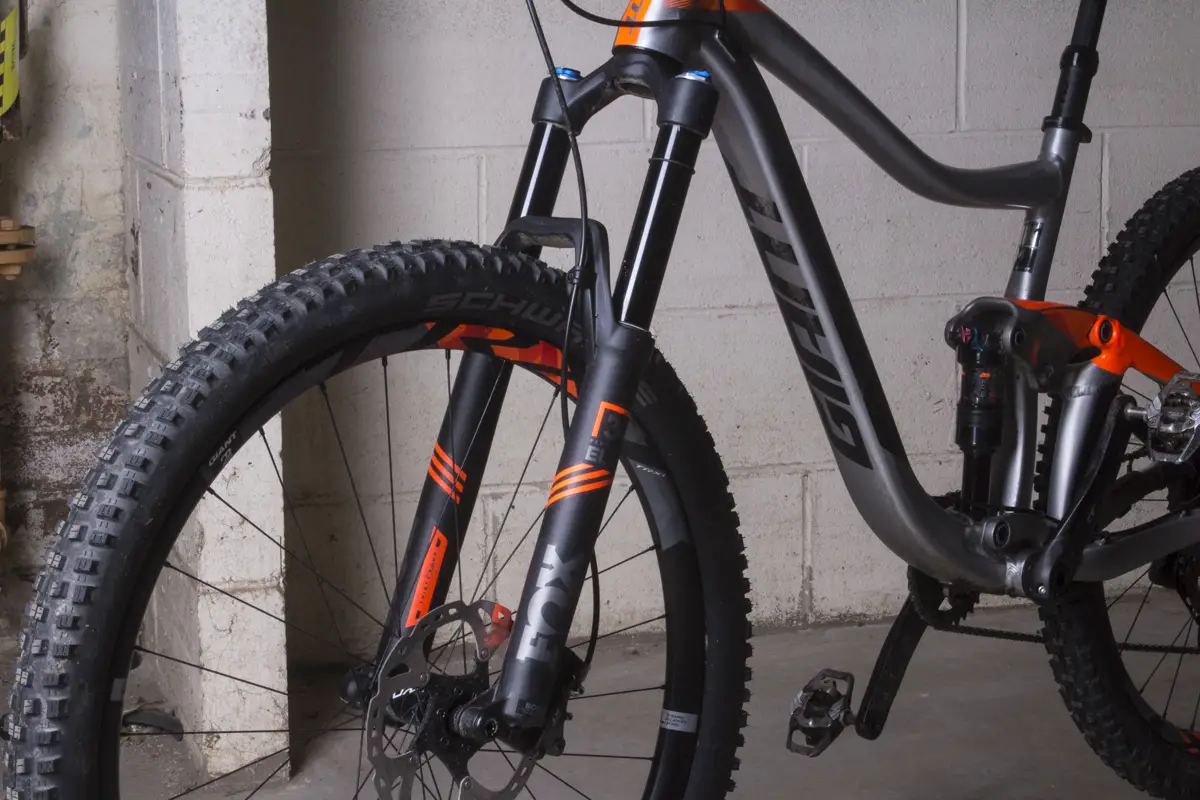
The Bike
Unlike previous Giant models, the latest Trance elects for a much more subtle paint and graphic scheme. In fact, you’ll have to search pretty hard to find both the ‘Giant’ and ‘Trance’ logos, which makes for a nice change from the billboard-style of old.
As a manufacturing heavyweight, Giant has flexed its engineering muscles on the Trance’s shapely ALUXX alloy frame. Impressive hydro forming has resulted in loads of curves, bends and flares to each tube on the frame, with the internal walls changing thickness from end to end depending on where the loads are being applied.
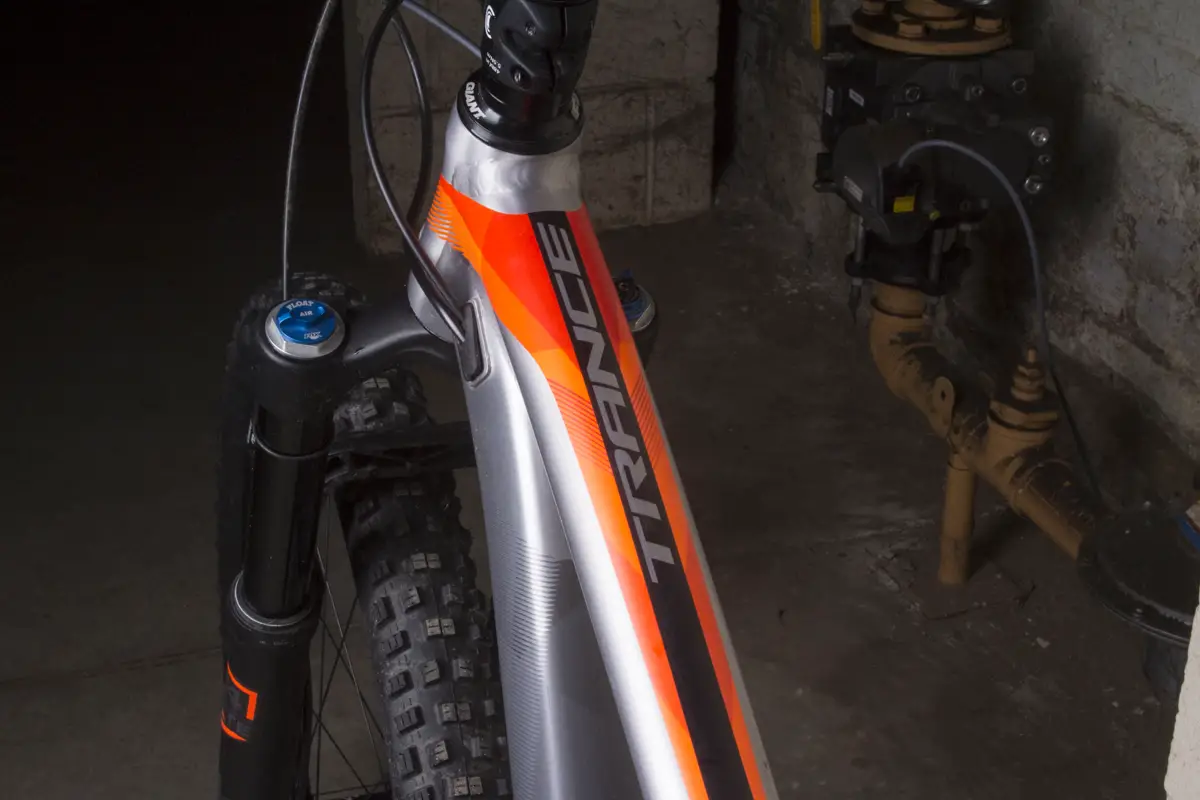
Save for a few weld lines, the smooth matte frame finish gives the Trance 1 a distinctly carbon-esque appearance. The droopy top tube maximises standover clearance, while the S-shaped downtube offers fork crown clearance before dropping down to accommodate the lower shock mount. Of note is that a full size water bottle will comfortably fit inside the Trance’s front triangle.
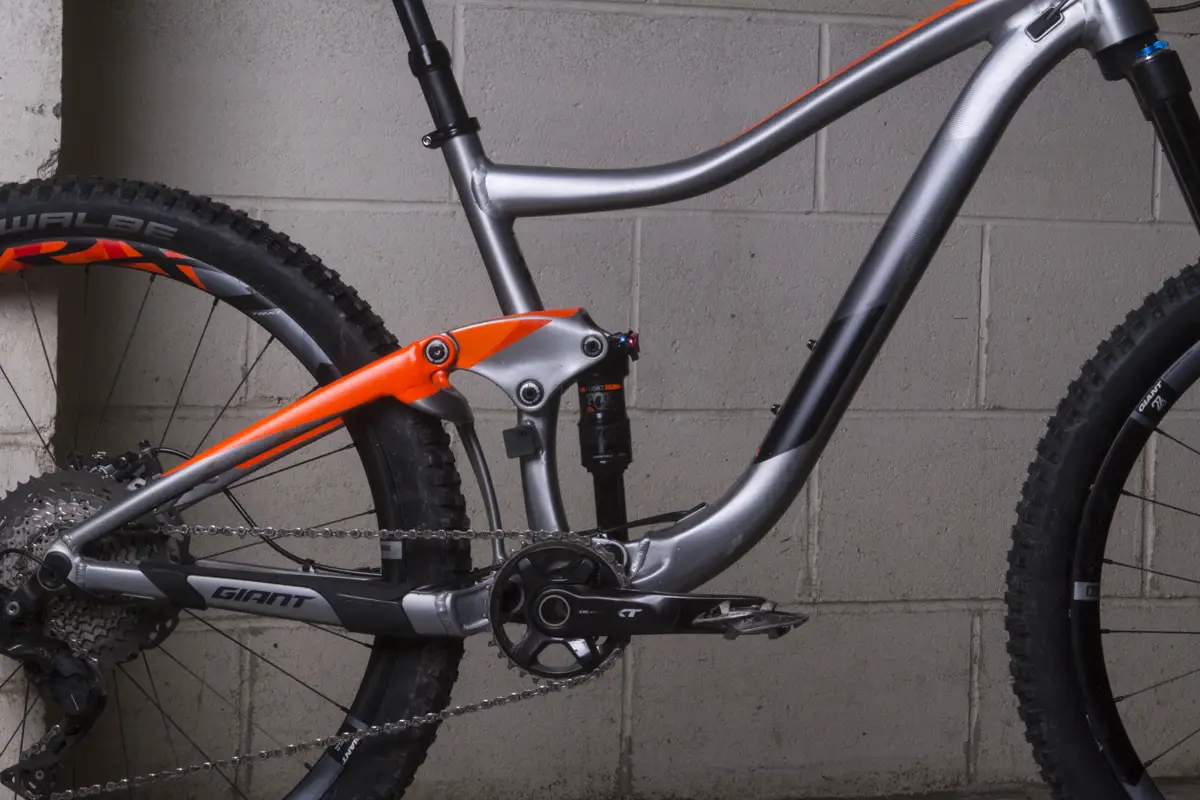
Tying that front triangle to the welded one-piece swingarm is the twin-link Maestro suspension design. This has been a feature of the Trance since it first launched in 2005, but the new version is notably different. For a start, the upper rocker link is crafted from a single piece of composite fibre. Giant states this rocker link is 50% stronger and 50% lighter than the old welded alloy rocker link. Win-win.
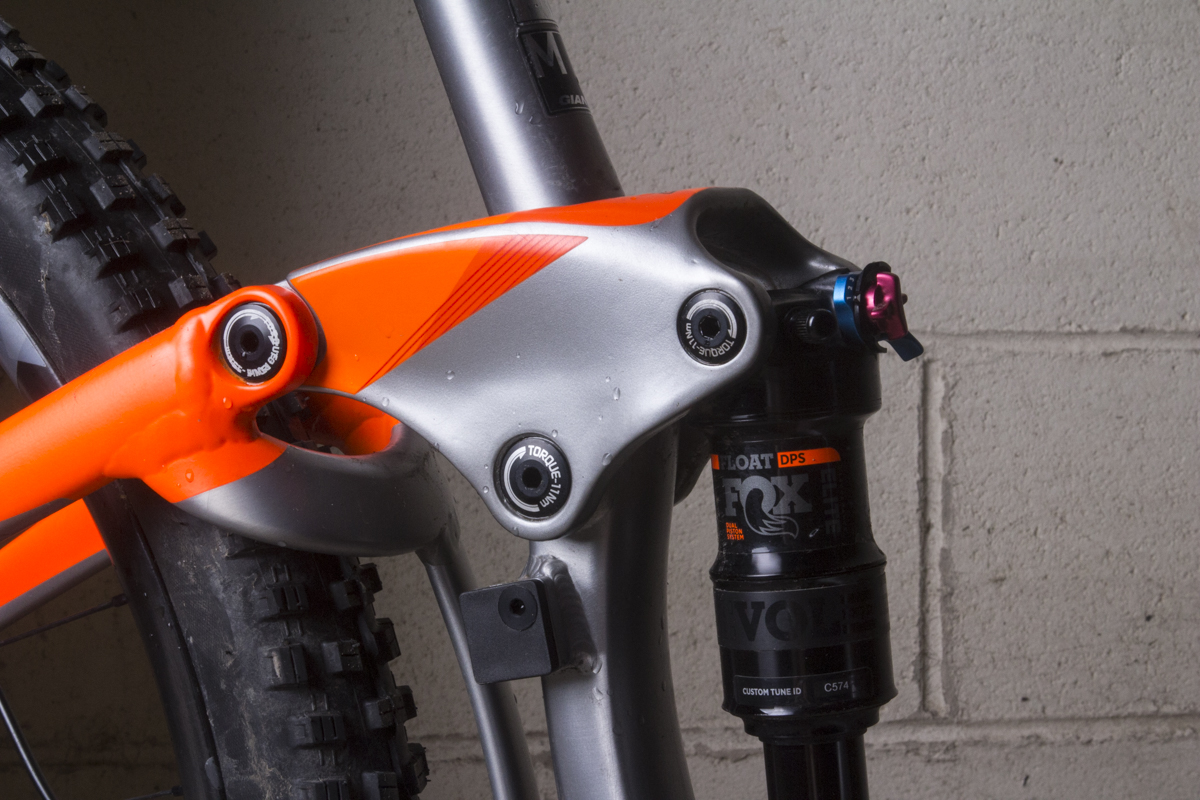
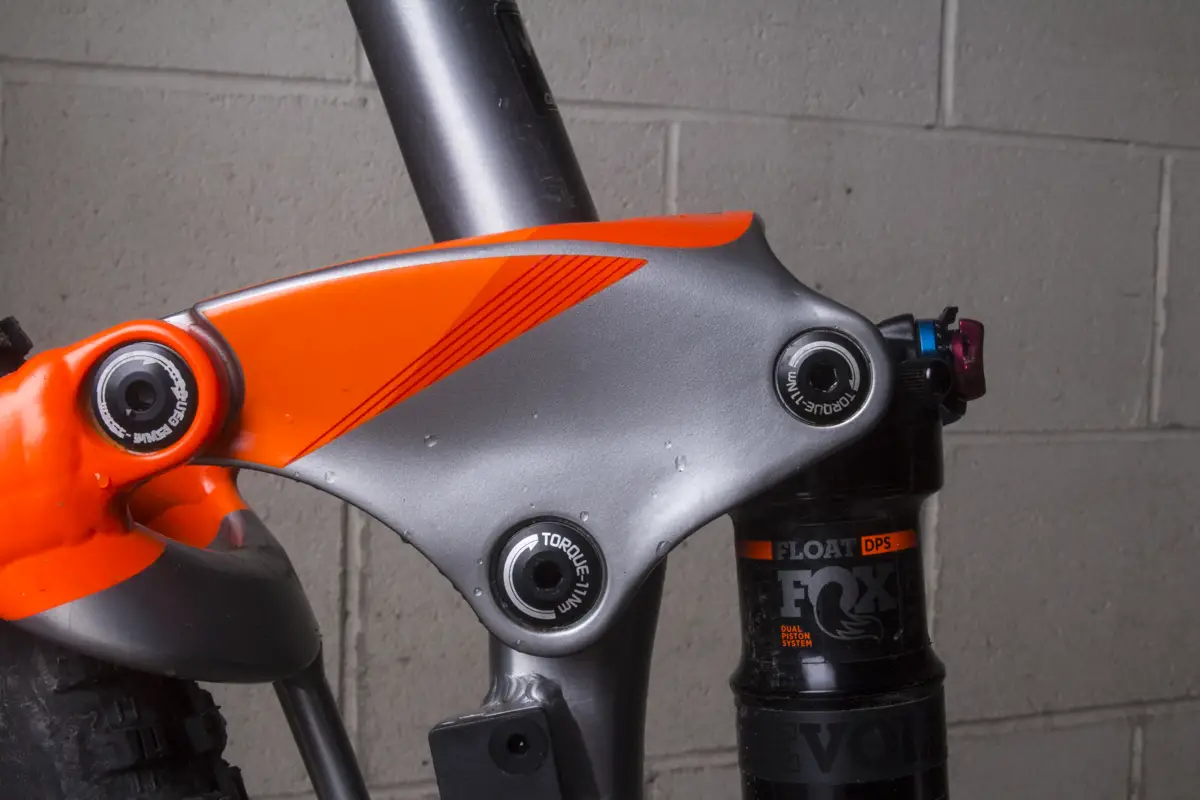
The rocker then connects to the metric-sized shock via a trunnion mount. So rather than a traditional DU bushing at the top of the shock, the trunnion mount sees two cartridge bearings bolting on to either side of the shock. This mirrors the design used on the new Anthem as well as the Liv Hail and Pique models, and in our experience, allows for a more supple suspension feel with less stickiness in the starting stroke.
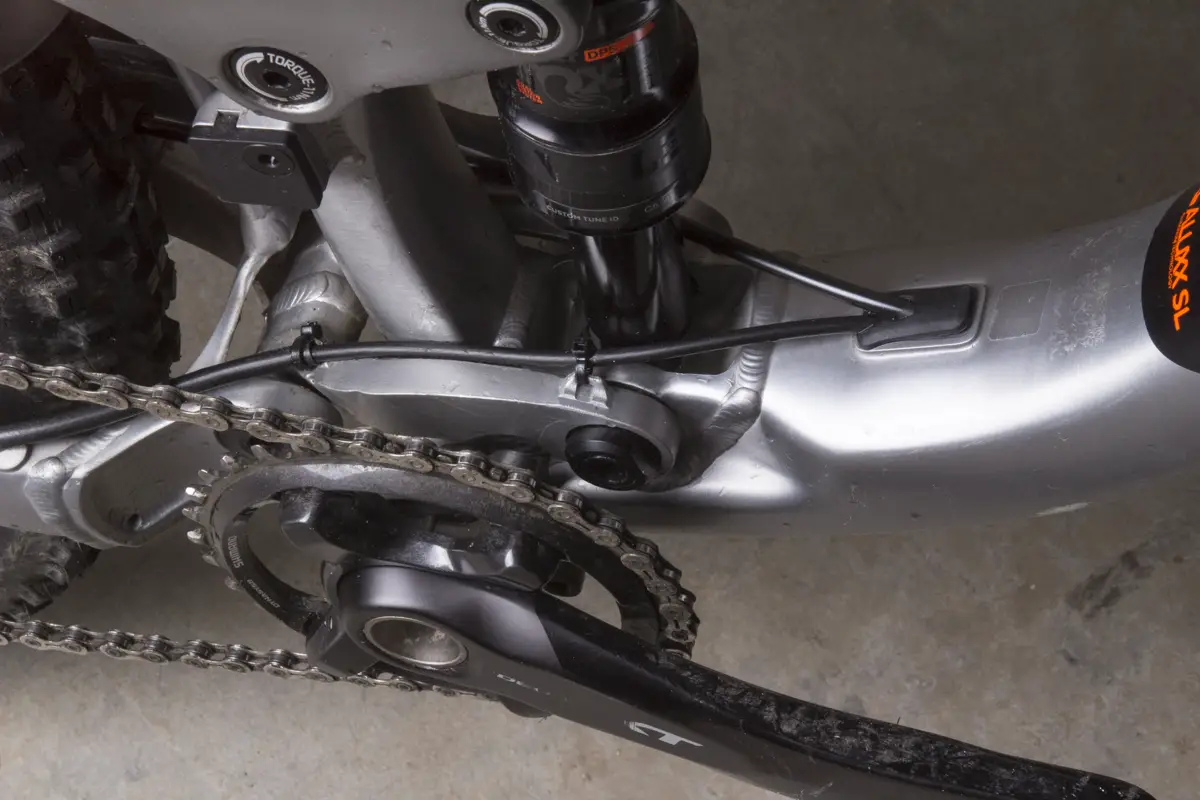
The Fox Float DPS itself is also a much smaller package, with the metric shock size delivering a longer stroke in a more compact eye-to-eye length. One appreciable by-product of the Maestro design is that the lower shock mount shares the same pivot shaft as the lower link, which helps to reduce moving parts. However, the pocket sculpted into the downtube for the lower shock mount does allow water and muck to pool, making it a bit fiddly to clean after a grubby ride.
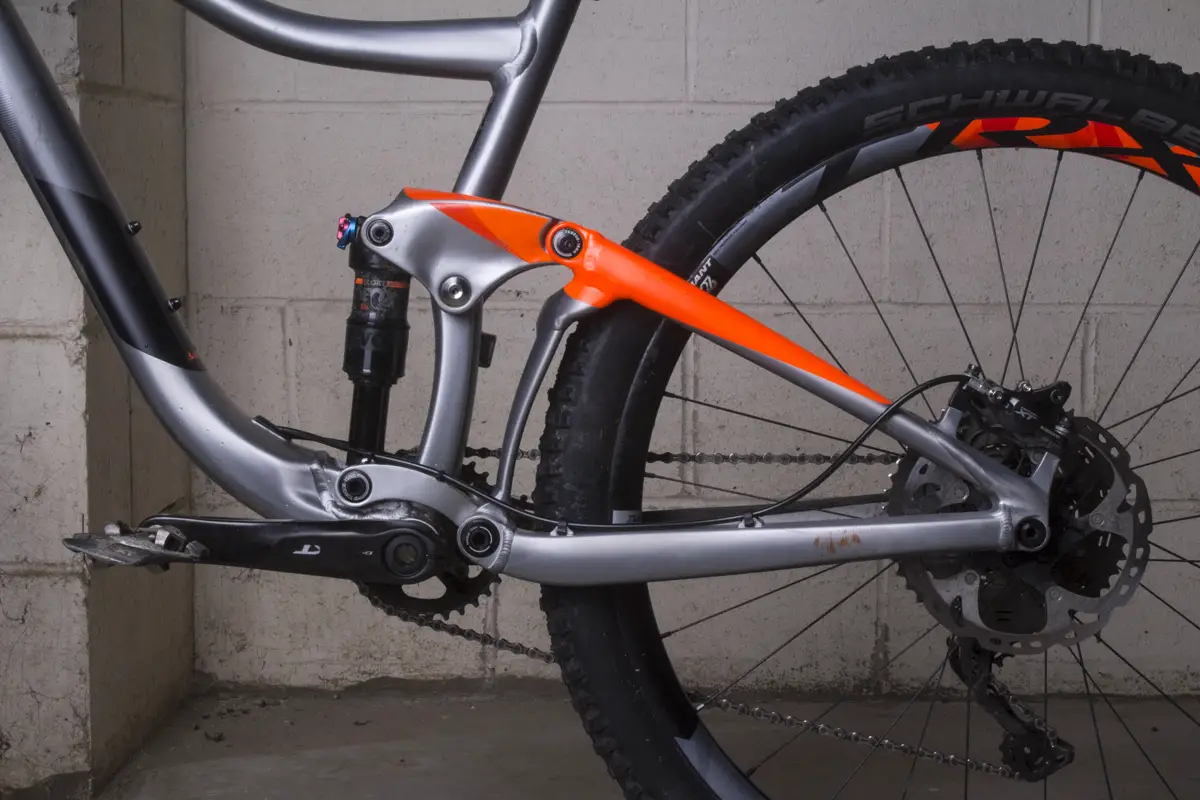
As for travel, the Trance dishes out 140mm out back, while front travel been pushed up slightly to 150mm. Along with the 27.5in wheels, that puts the Trance in the same bracket as popular trail bikes such as the Specialized Stumpjumper, Orange Five, Canyon Spectral and Norco Sight.
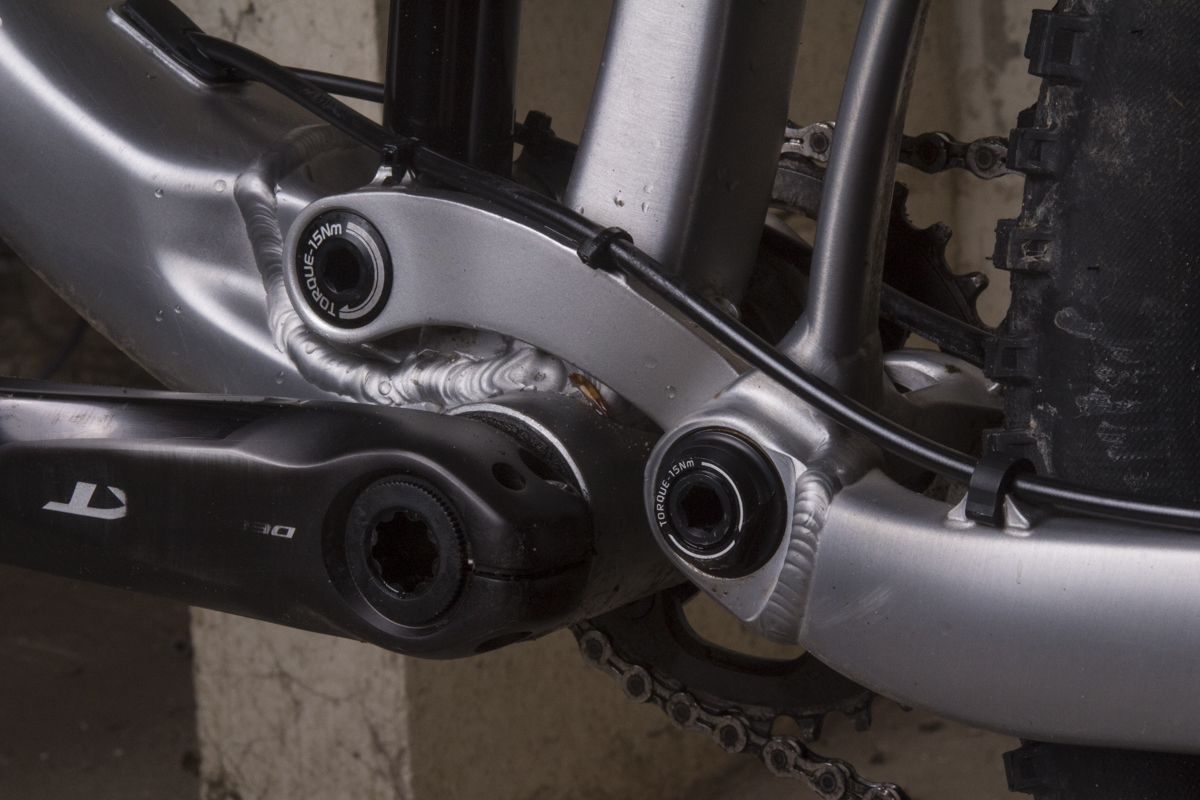
With the new frame, Giant’s designers have also called on some improvements in geometry to increase the Trance’s stability on fast and rough trails. The front end has been stretched out a touch, with the reach on our Medium sized bike having grown 10mm from 425mm to 435mm. The bottom bracket has been lowered by 5mm, while the chainstay length has been snugged up by 4mm, and now sits at 435mm long.
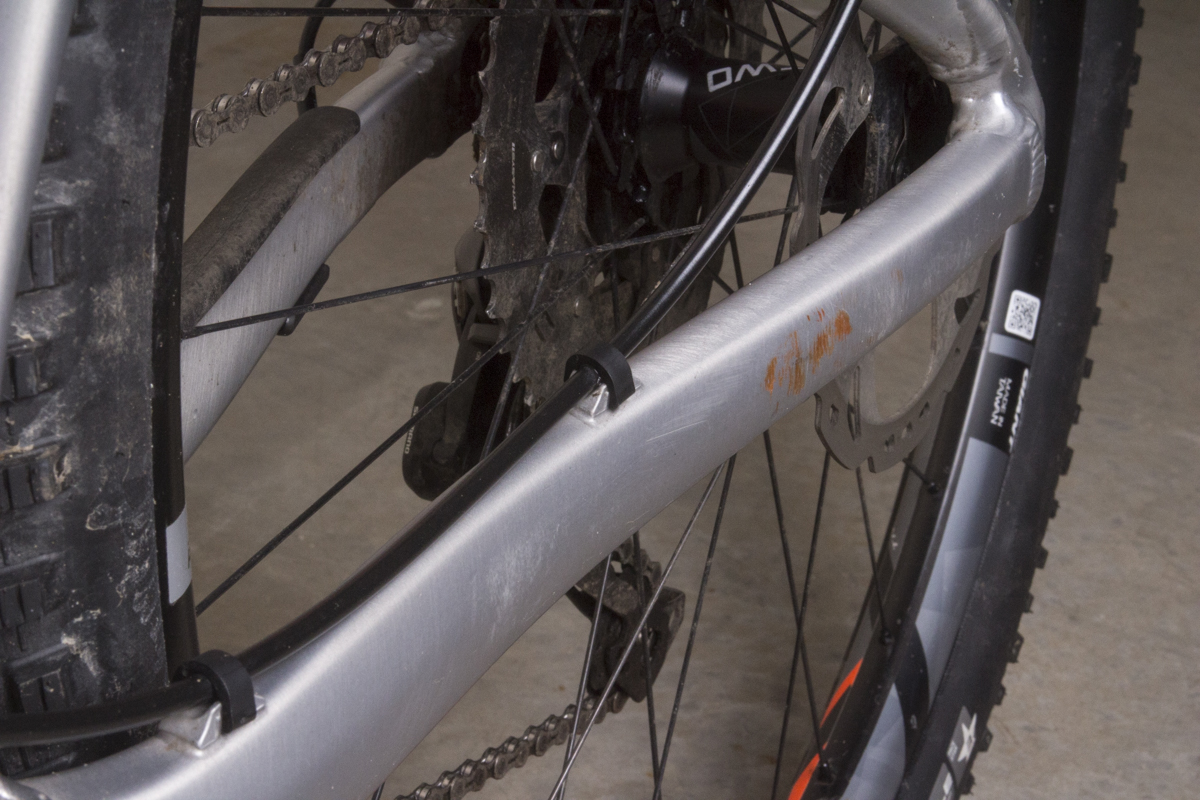
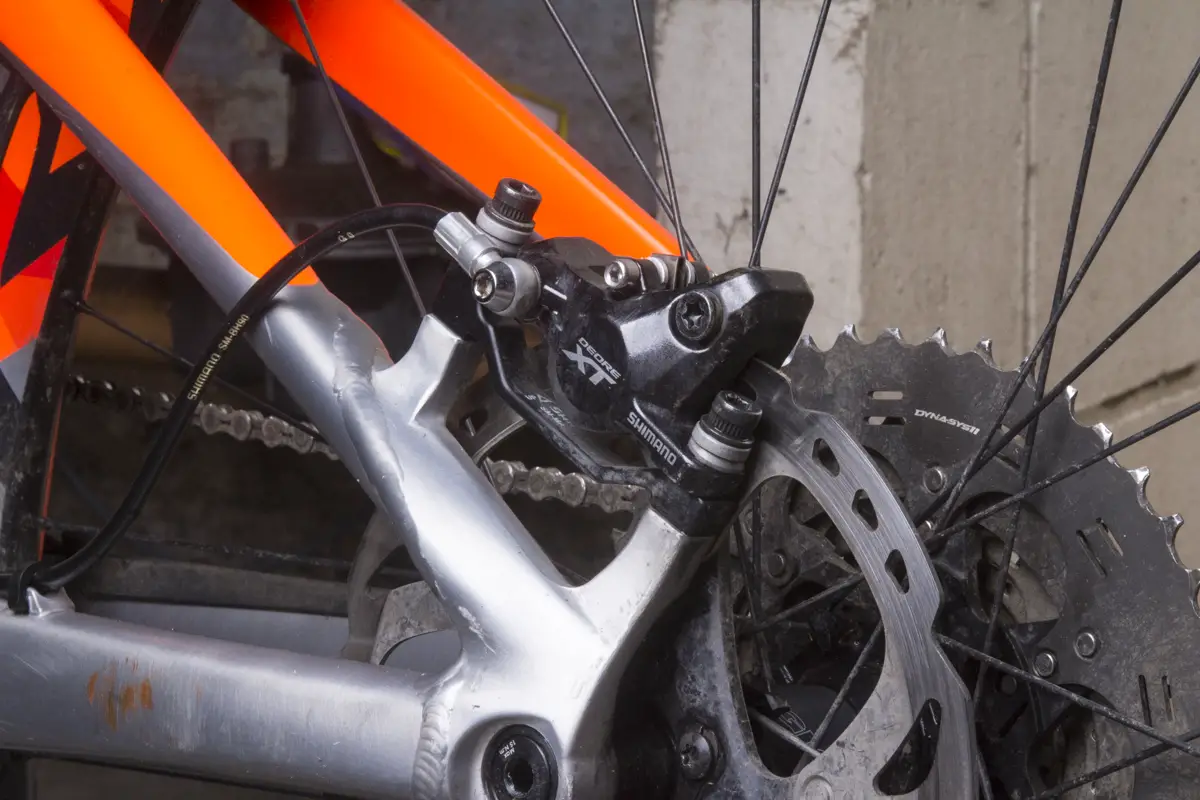
Compared to some of the uber-modern trail bikes out there, the angles on the Trance are still very much on the conservative side, including the 67° head angle and a 73.5° seat angle. And despite the swoopy top tube, standover clearance has actually decreased with the new frame, which is likely due to the taller fork and 5mm longer head tube.
Then again, numbers do only tell one part of the story.
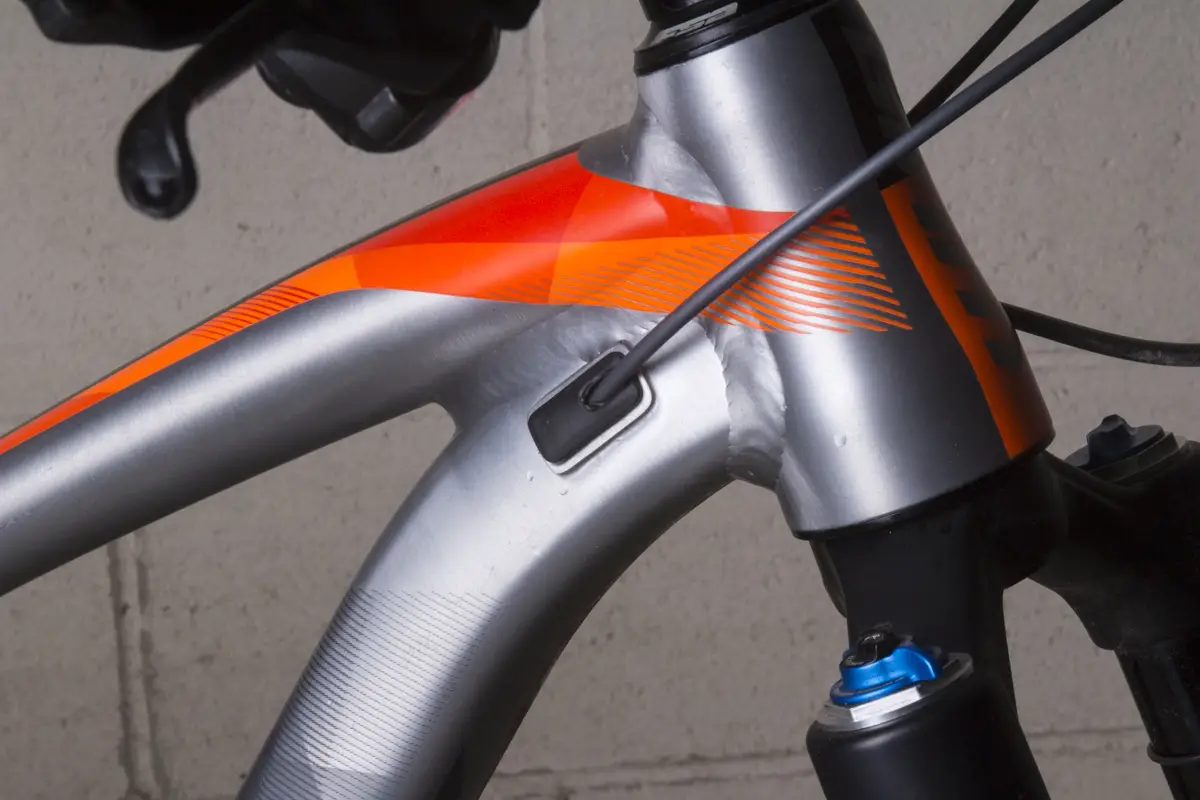
Other frame features on the Trance include an hourglass tapered head tube up front and a 92mm wide press-fit bottom bracket between the crank arms. Rear spacing is arranged for the 3mm Boost offset, with Boost hubs spec’d front and rear along with tidy bolt-up axles. All the cables run internally through the downtube with cosy rubber ports, and while it may be redundant to many, there’s a mount for bolting on a front mech should you want one.
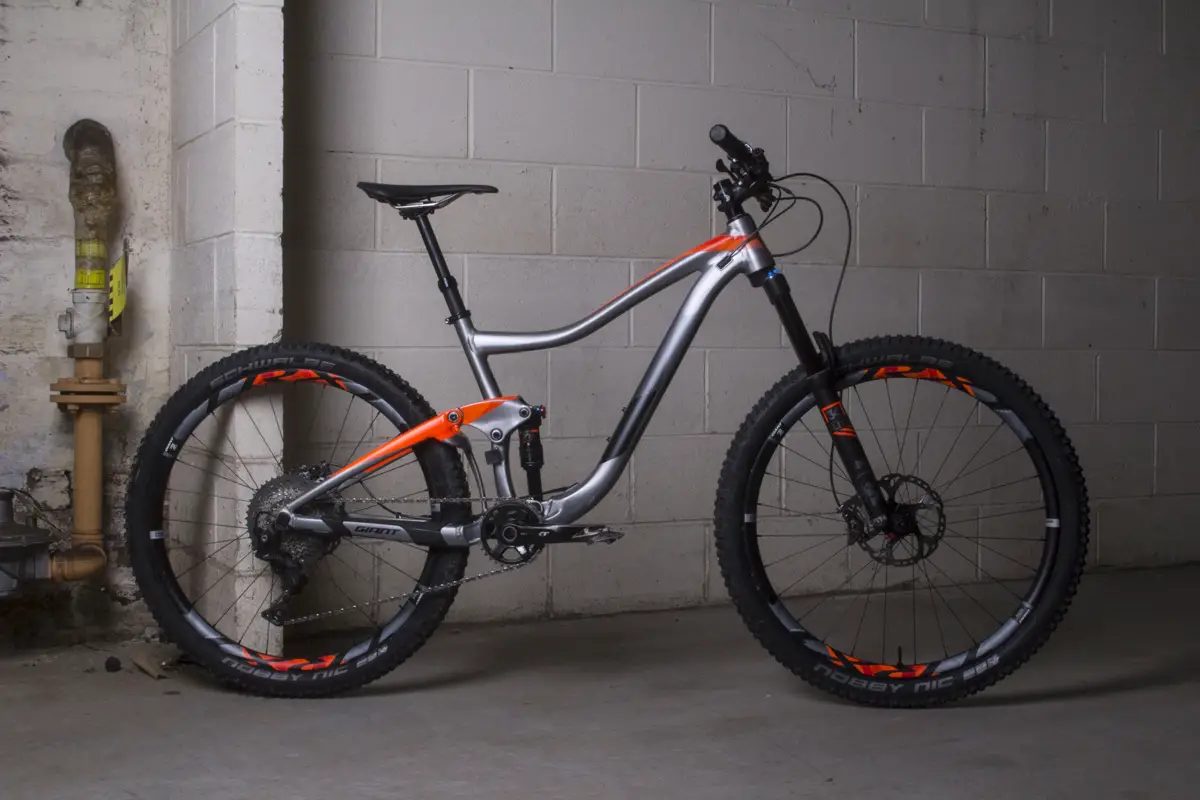
If you want to get the full rundown on frame geometry and some of the other features on the bike, check out our First Look of the 2017 Giant Trance 1 here.
The Ride
When the Trance first arrived at Singletrack Towers, it required minimal fettling to get it setup for the first ride – Shimano XT is really good like that. Giant includes tubeless tape and valves in the box with the bike, so after half an hour I’d ditched the tubes, added some sealant, and had a 12.37kg bike ready for the trails.
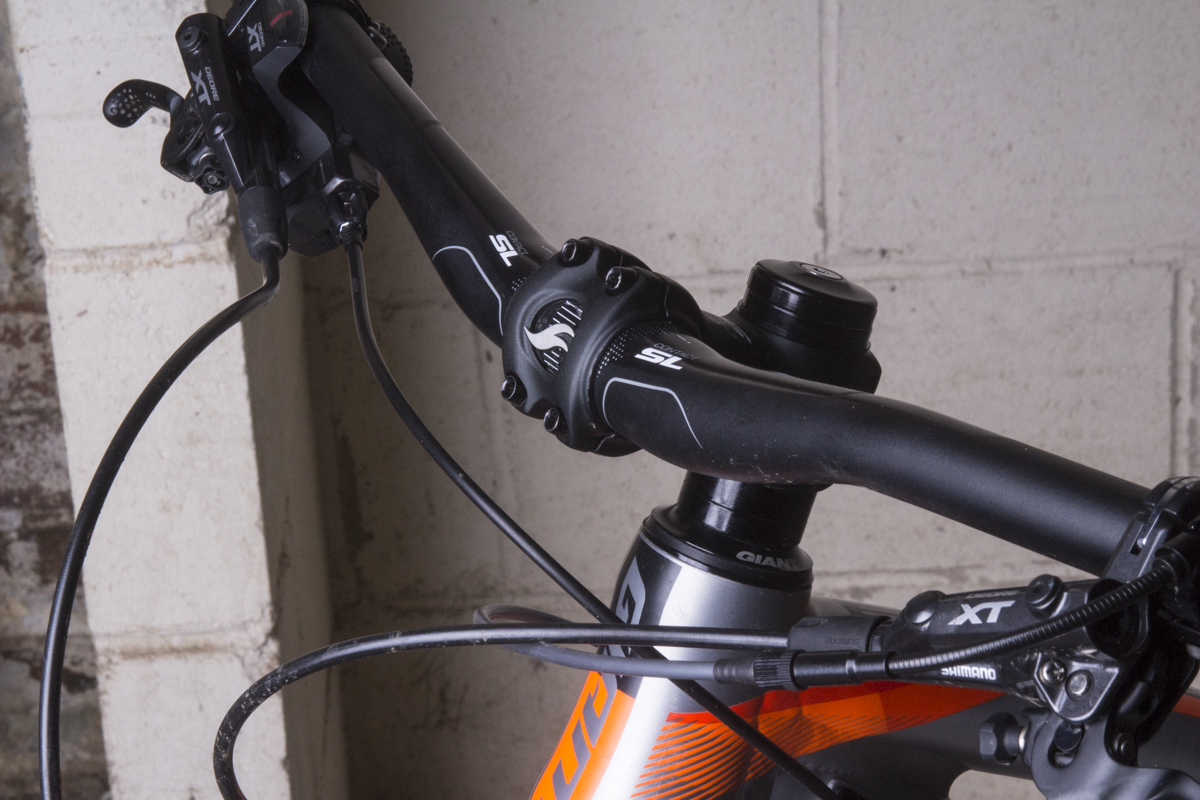
In its stock configuration, the riding position on the Trance is quite open and upright – in a comfortable ‘I wanna ride all day long’ kind of way. For the Medium frame sizes and under, Giant specs a 60mm long stem on the Trance, while the Large size gets a 70mm stem, and the X-Large goes to 80mm. All sizes come stock with a 750mm wide riser bar.
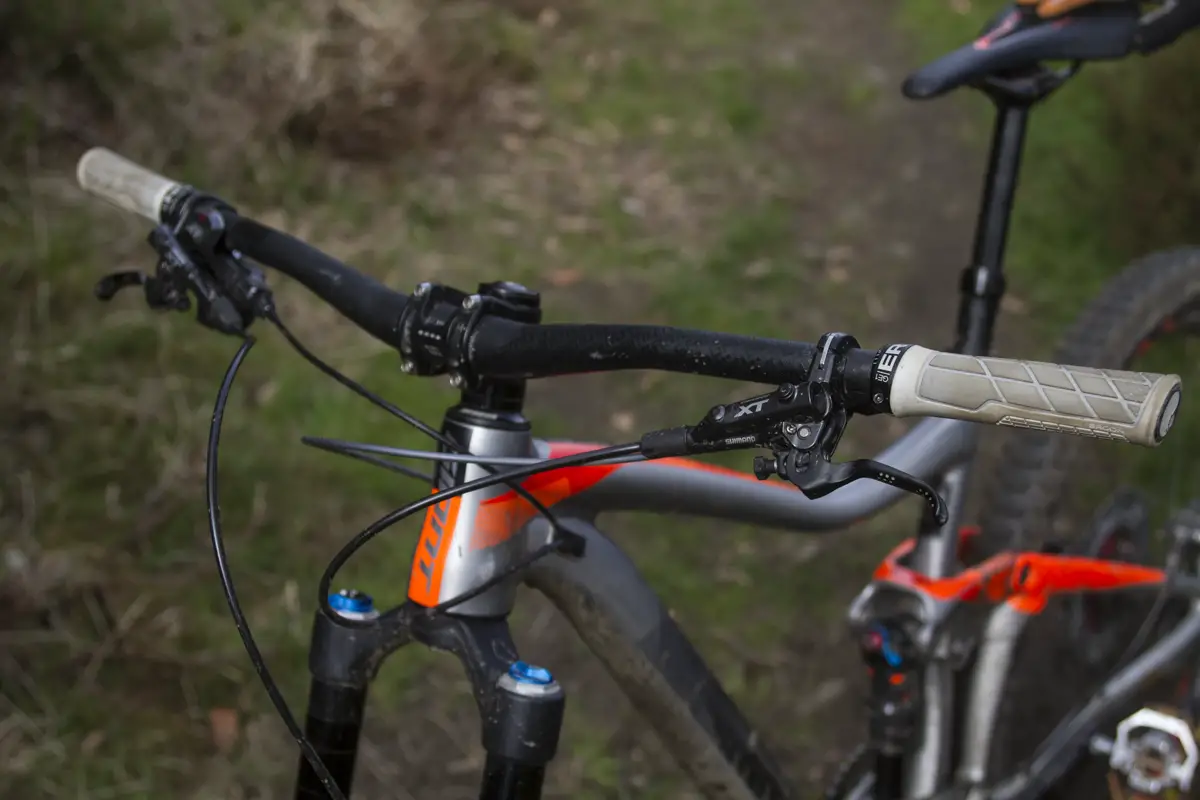
Although the position felt fine for cruising, I did find myself wanting to get a little wider and lower over the front of the bike. And so early on in the test period I succumbed to the bike journalist stereotype by swapping in a lower rise 760mm bar and a flat 40mm stem. After dropping the stem down a couple of spacers and adding a set of excellent Ergon GE-1 grips to widen the handlebar tips just a little further again, I was feeling much more confident with the cockpit on the Trance.

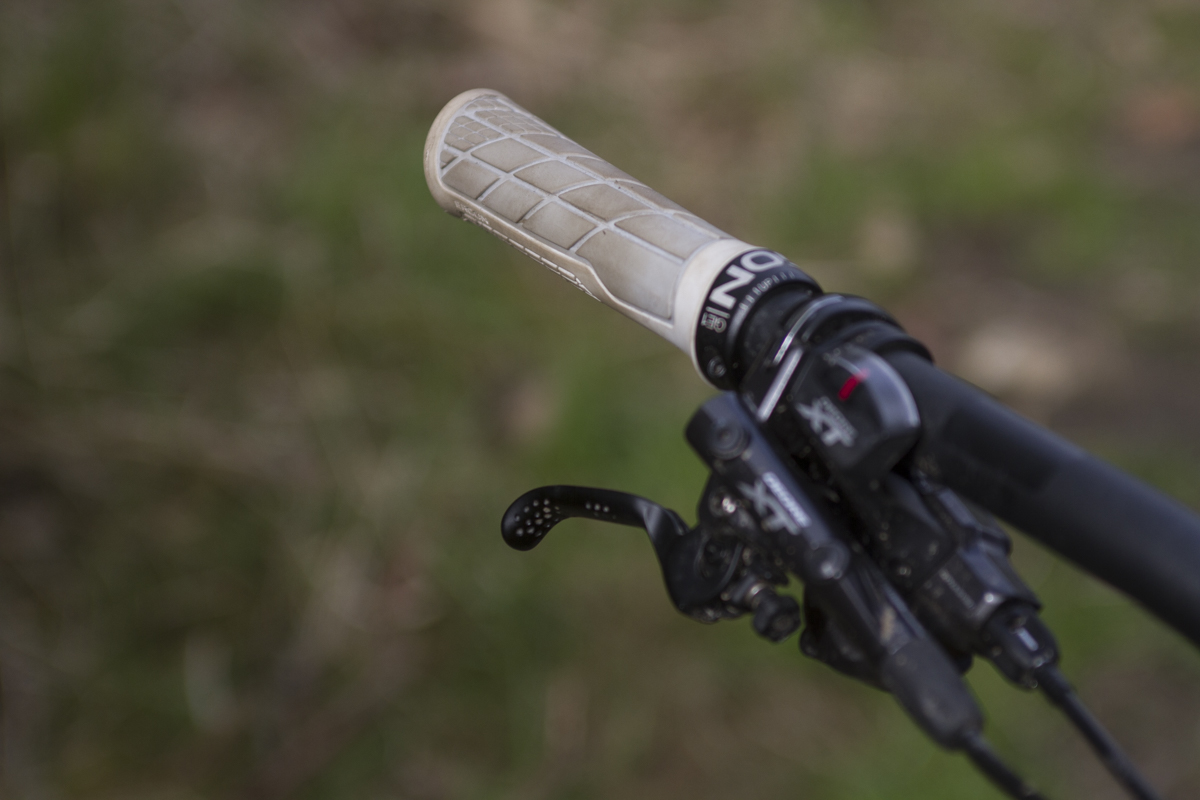
I will say that I’m not convinced that every rider requires the widest of bars and the shortest of stems, but given that the Anthem I tested recently basically comes with the same cockpit setup, I’d have expected Giant to have pumped up the Trance a little more than that.
While on the note of sizing, I chose the Medium frame size given that’s what’s recommended for a 175cm tall rider like me. However, riders wanting to get that longer front centre for increased descending stability may want to upsize. Given the short seat tube and 125mm dropper post, there was certainly plenty of clearance that would have allowed me to get onto a Large frame, which comes with a 448mm reach. However, reach and cockpit setup is all a bit arbitrary these days, so it’s best to at least demo a couple of options before assuming you’re a specific size.
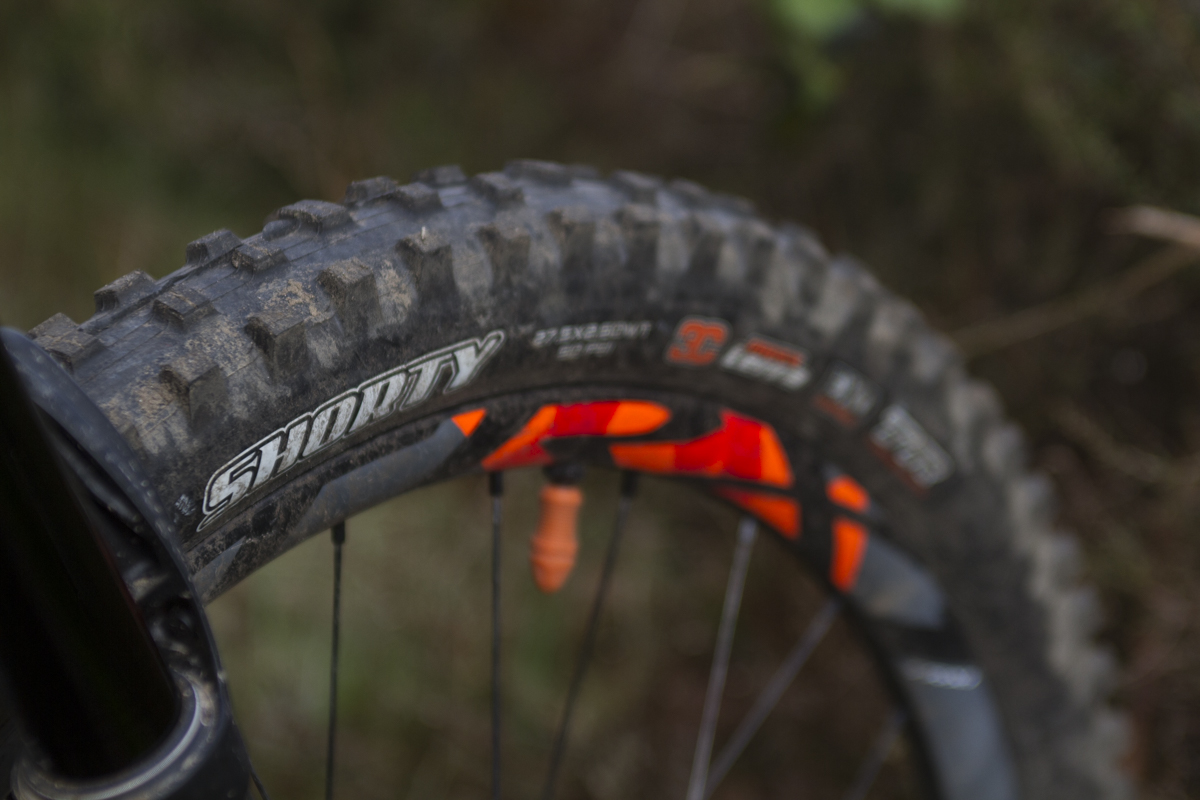

The other change I made early on was tyre choice. The stock rubber comes in the form of Schwalbe Nobby Nics, with a 2.35in on the front, and a 2.25in on the rear. They’re good lightweight tyres for mile-munching on soft loamy trails, but having adopted the Trance in the middle of winter, I decided to swap in some meatier treads from Maxxis. Depending on how sloppy conditions were, I rode with a combination of 2.5in wide Minion DHFs, DHR IIs and Shortys throughout the rest of the test period.
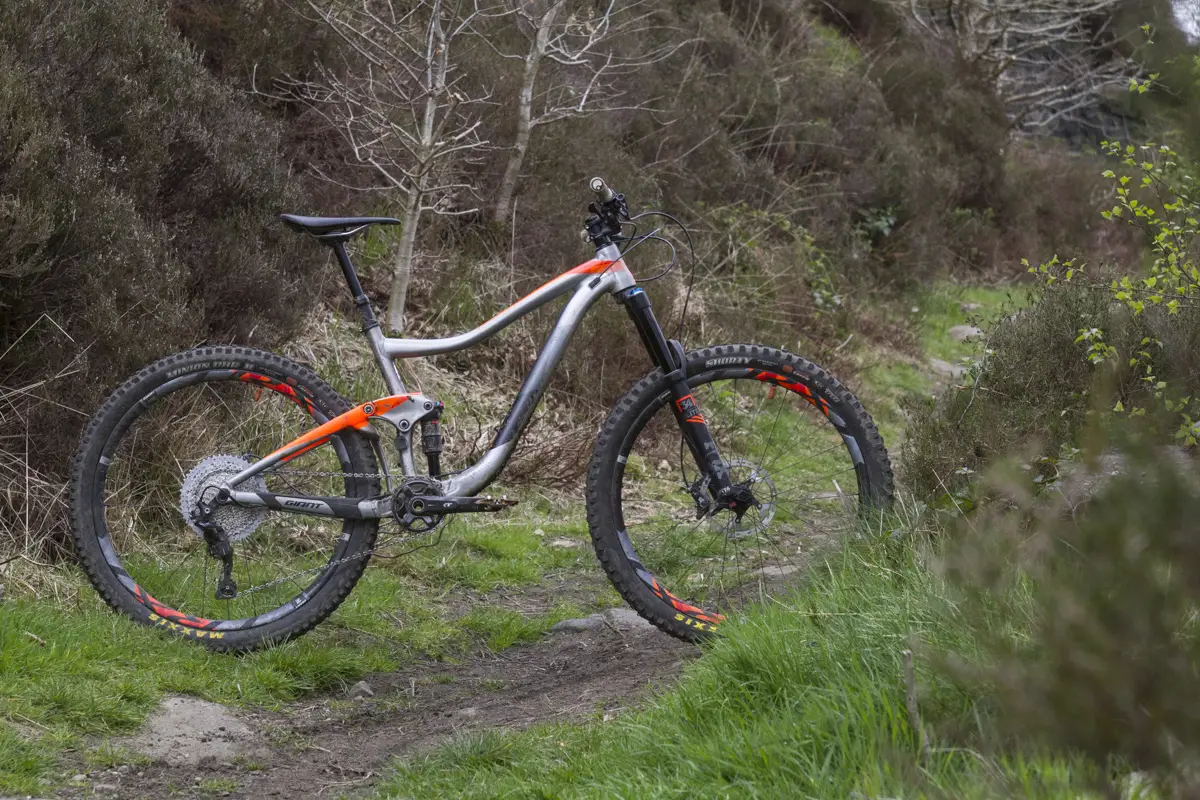
Getting the suspension dialled in on the Trance was refreshingly easy. For my 68kg riding weight I ended up with 165psi in the rear shock to reach 30% sag, with the red rebound dial wound in 8 clicks from full fast. 63psi in the fork did the trick for 25% sag, with 9 clicks of rebound getting things balanced front and rear. Surprisingly for me, I didn’t touch the suspension for the remainder of the test – it was absolutely bob-on from the get-go, with no need to mess around with volume spacers or damping adjustments.
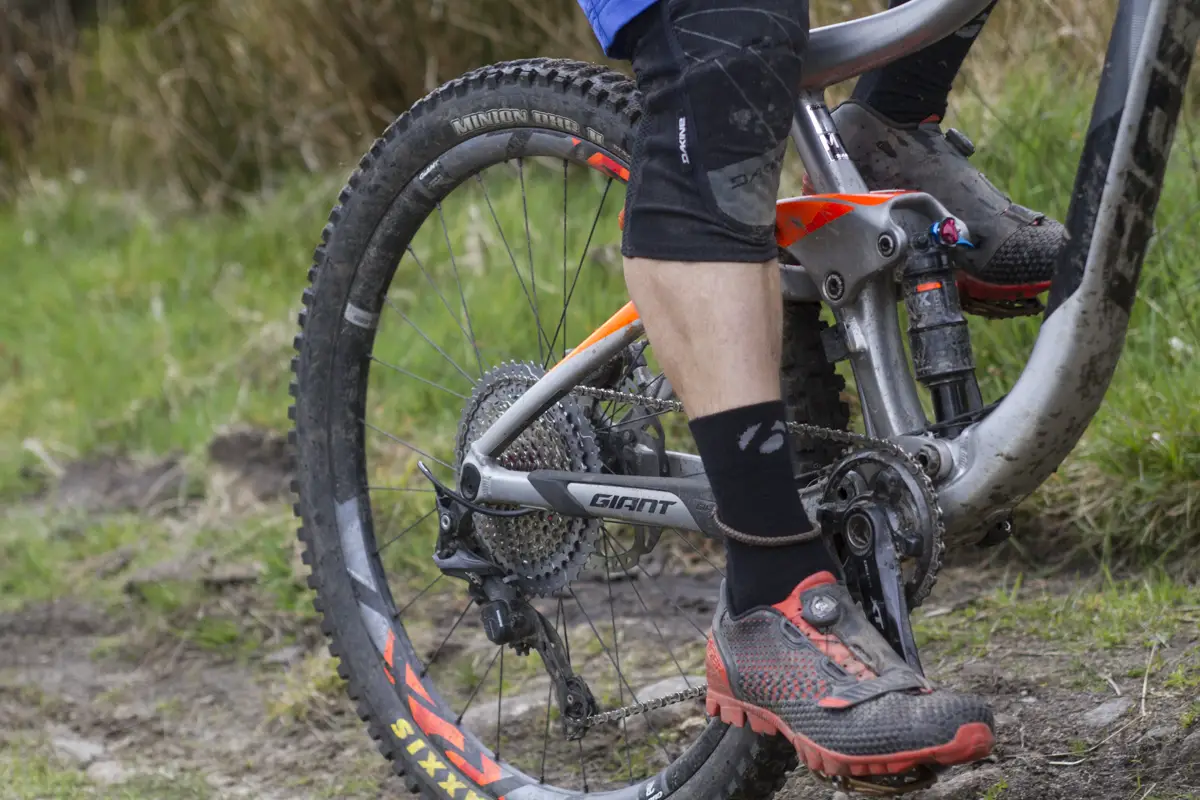
Much of that is because Giant has got the suspension absolutely nailed on the Trance, with an overall feel of buttery, buttery plushness. Seriously, this bike could well be the smoothest feeling full suspension bike I’ve ridden. The combination of the custom tuned Fox Float DPS shock, trunnion mount and updated Maestro linkage delivers incredible sensitivity, making it feel like you’re floating on a lovely pillowy cloud. With a linkage orientation that isn’t worlds apart from the excellent dw-link suspension design, the supple action on the back of the Trance doesn’t feel dissimilar to bikes such as the Ibis Mojo 3 and Pivot Switchblade.
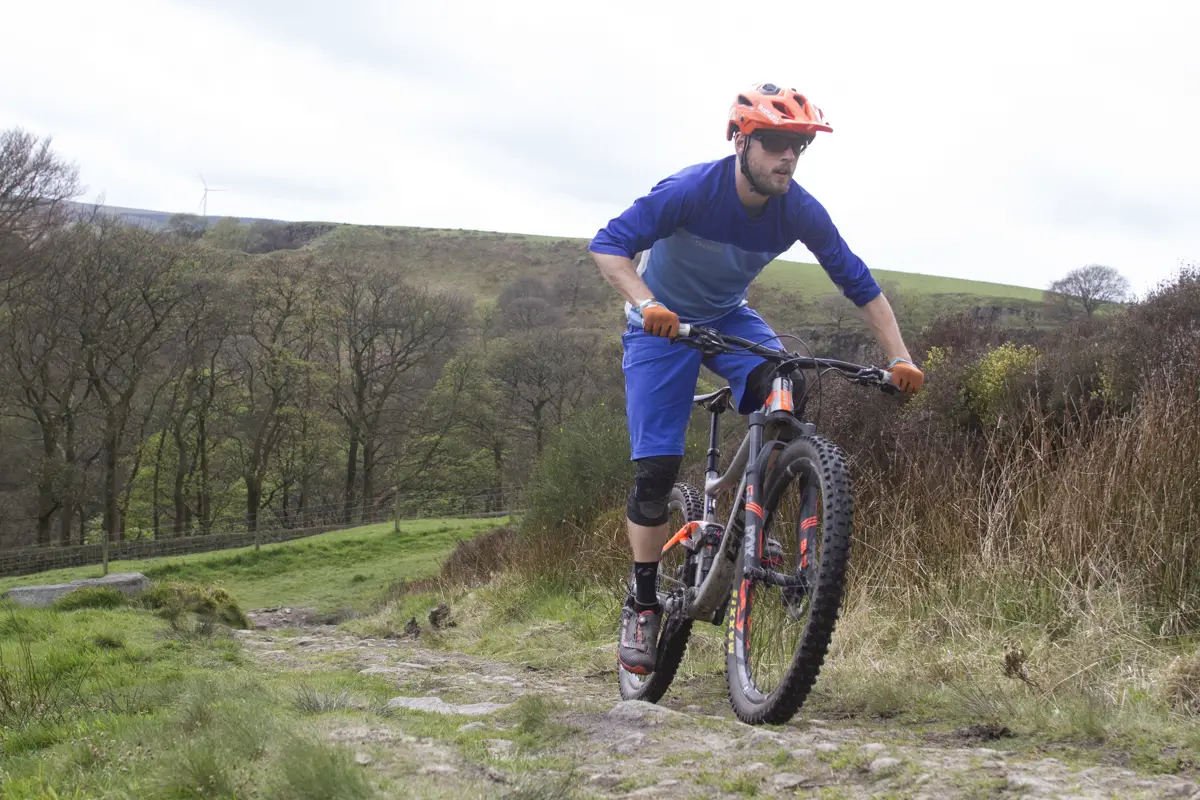
Just like the new Anthem, there’s been a slight loss of pedal efficiency with the new Trance suspension design, with more shock activity occurring when riding in the Open compression setting. Pedal smoothly in the saddle, and the Trance glides along. Pedal harshly and with heavy weight transfers, and the shock will bob a little. It’s not that big of a deal, and in my opinion, the increase in suppleness is well worth the trade off.
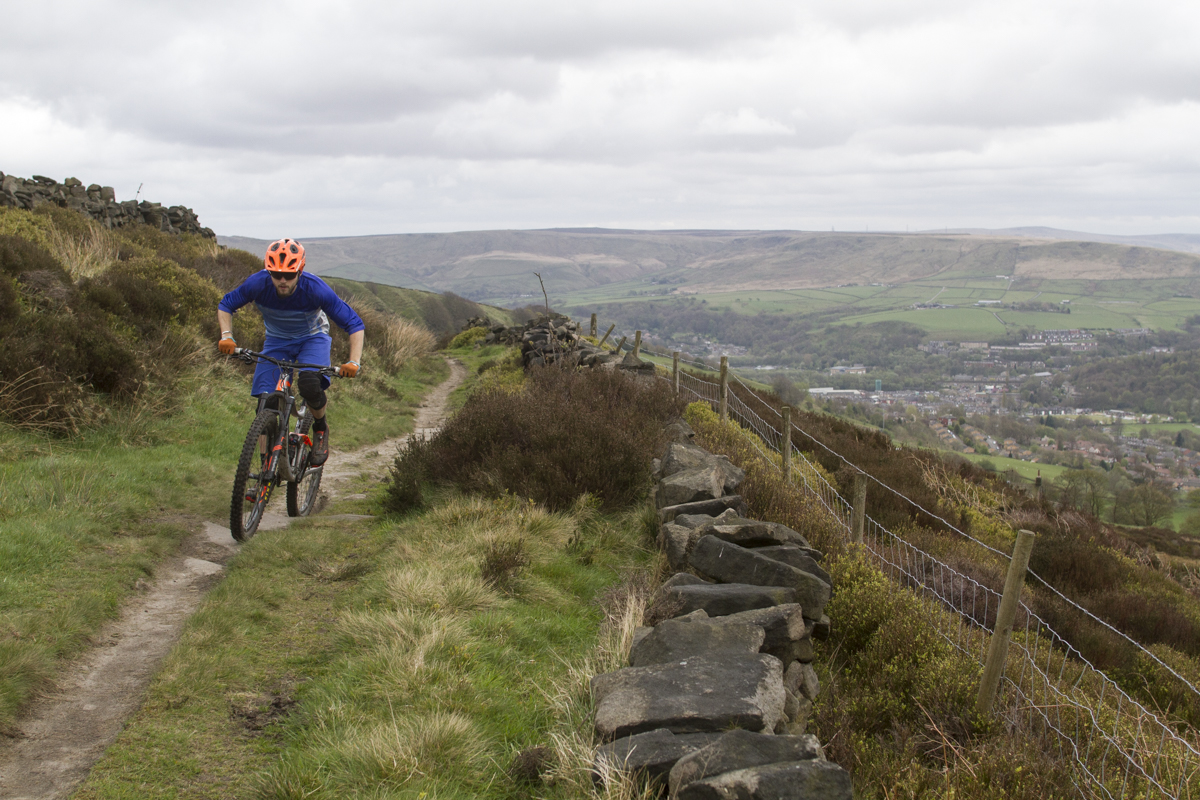
As such, I spent most of my ride time in the Open setting with the black compression dial set to 1, where I could enjoy each and every millimetre of travel on offer. But if you must have more support and snappiness under pedalling inputs, adjusting the black compression dial into ‘2’ or ‘3’ will achieve exactly that. The Medium setting for the shock’s blue lever is quite a bit firmer than any of the Open mode settings, and is really only useful for long road or freshly-graded fireroads. The Firm setting is basically a complete lockout.
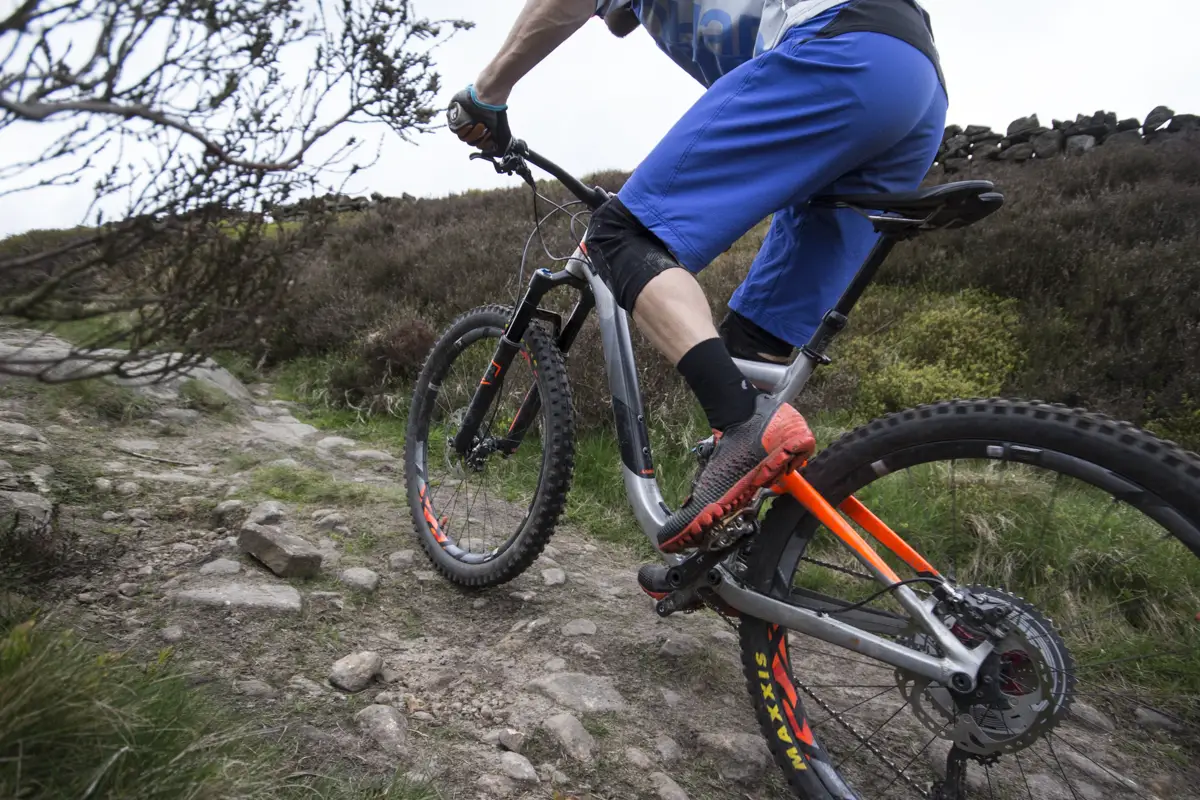
For technical climbing, the Trance makes short work of the kind of uphill sections that resemble a giant Picnic chocolate bar. The reactive suspension keeps the rear tyre driving into the trail surface for predictable traction, and with minimal feedback, it pedals smoothly even as the rear wheel’s doing the jive out back.

The only barrier to the Trance making mincemeat of really steep pinches is the tall front end. A combination of the generous head tube length, 150mm travel fork and steeper 67° head angle mean the grips do sit further off the ground, so for clearing uphill gradients above 15%, you’ll have to lean forward, bend those elbows, and chew the stem to ensure you can keep the front wheel tracking where you need it to go.
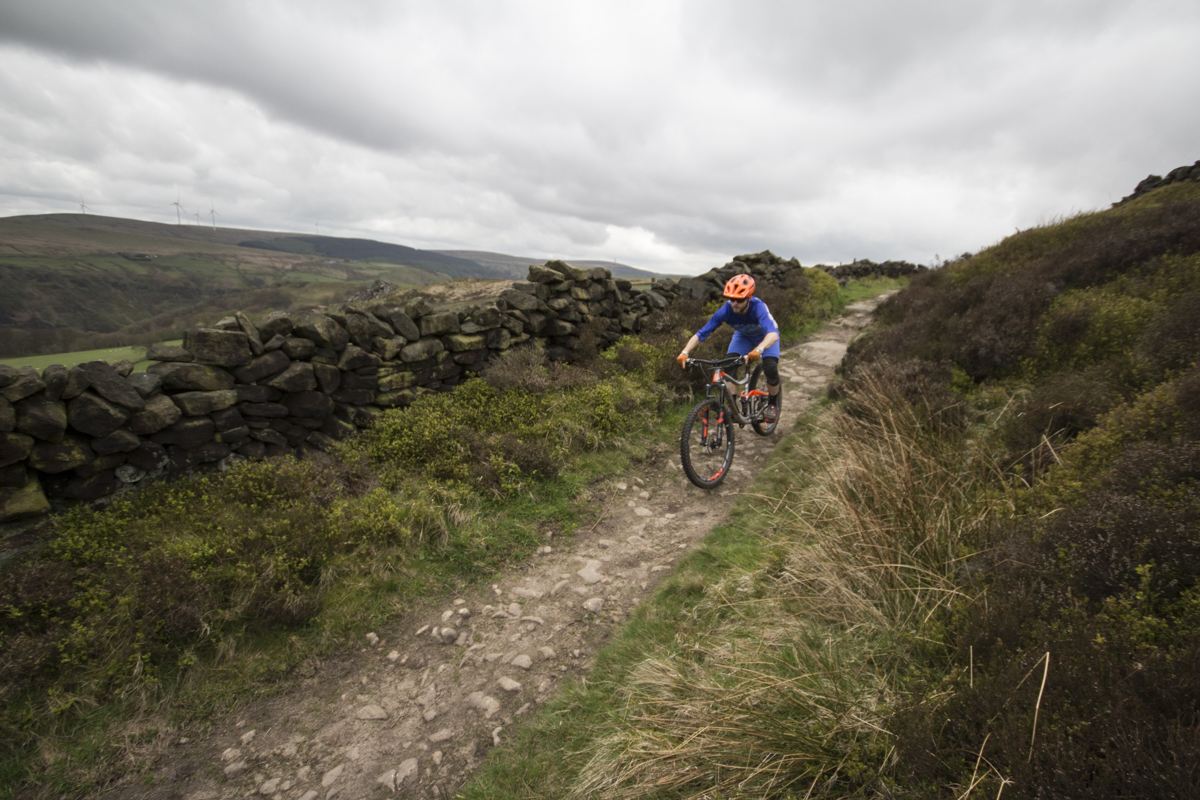
As the trail flattens out and snakes along the hillside though, the playful attitude of the Trance really begins to shine through. Thanks to the crisp acceleration from those lightweight carbon wheels, the Trance picks up speed really well, and seems to hold it even better. The bike has a nice and light feel to the steering, making it feel nimble and easy to place on the trail. Last-minute corrections to your line are intuitive and rapid, and tight corners are handled with ease. I’d say it feels lighter and more sprightly than the 12.37kg weight figure, with a level of nimbleness that feels more long-legged XC than burly All Mountain.
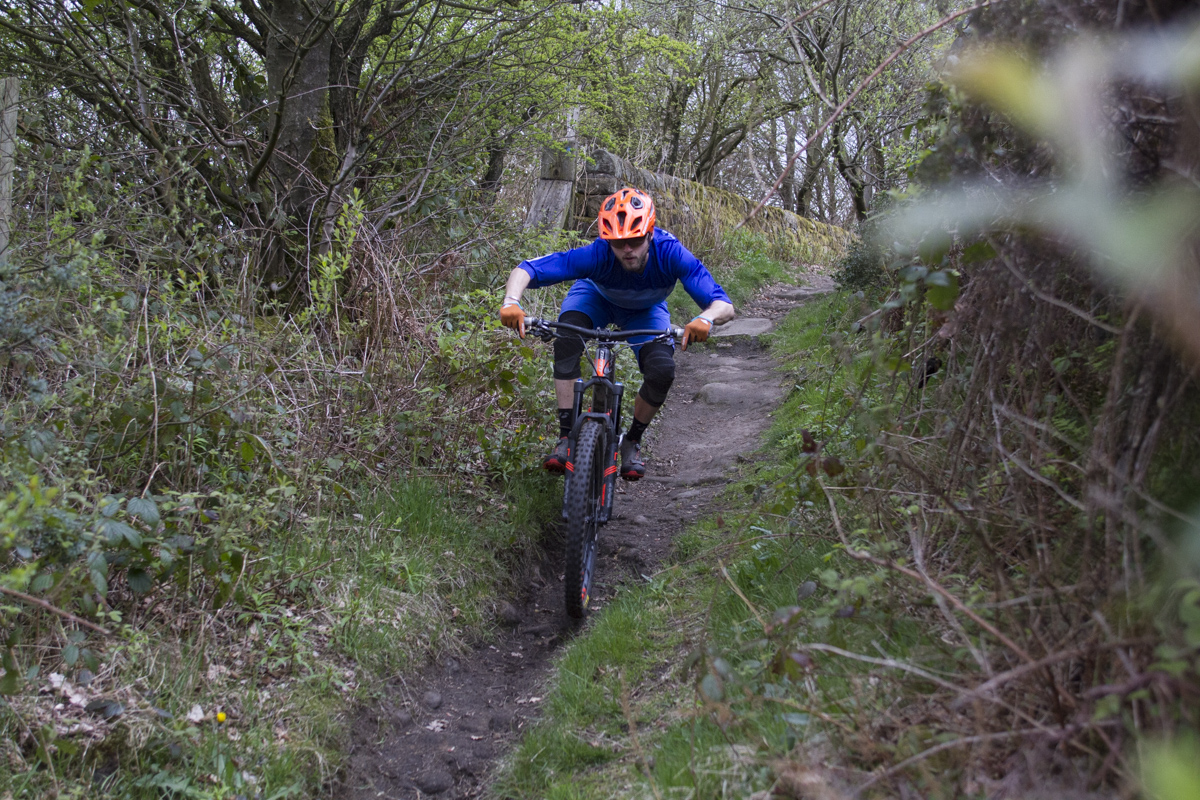
What really seems to work with the Trance as a package is that it’s sprightly and efficient nature is balanced well with the floaty suspension. Most trail bikes that deliver quick steering seem to have a habit of getting bucked off line as rock hits begin to rob speed and momentum. Not so with the Trance.
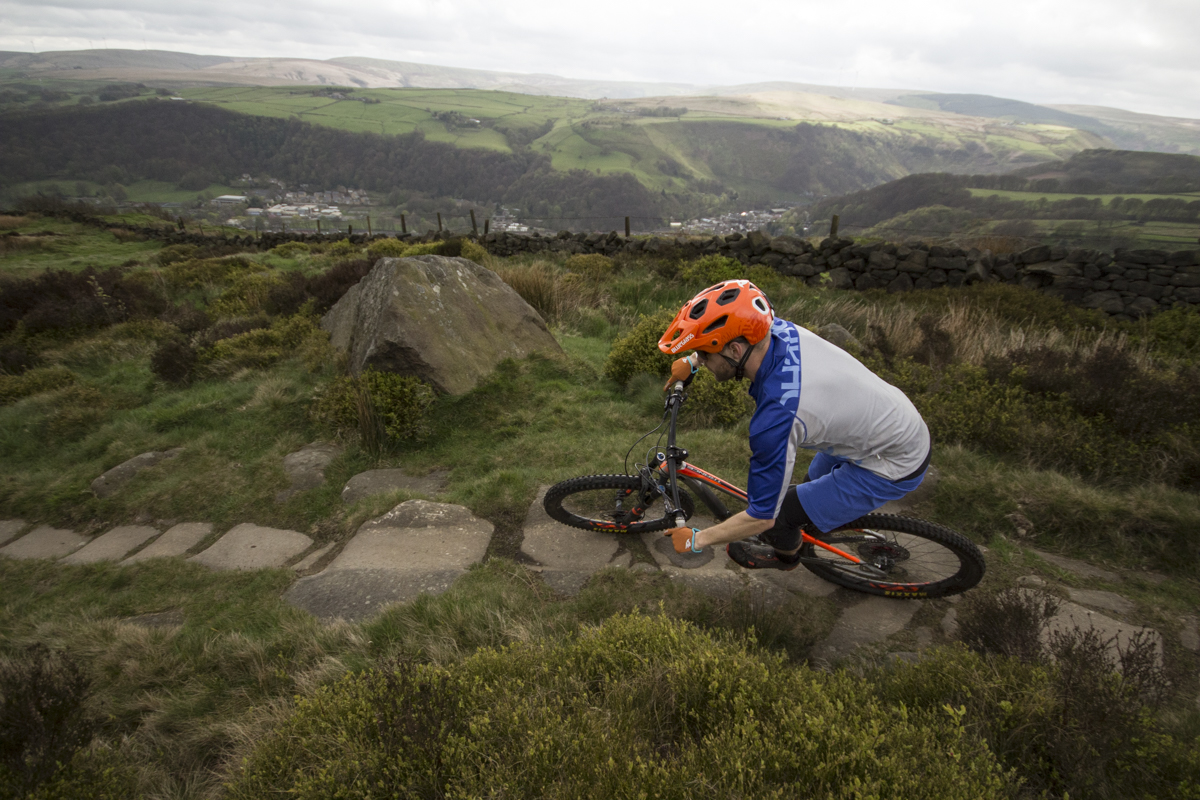
The reactive suspension has no problem accommodating medium and high-speed hits, helping to keep you isolated from the impacts that would normally be felt through the chassis. Even as the speedo continues to tick over, the Trance remains calm and composed. Even our local fast and chattery packhorse trails were laughed off by the Trance, where the supple off-the-top feel to the rear suspension tracked each and every impact with assured precision.
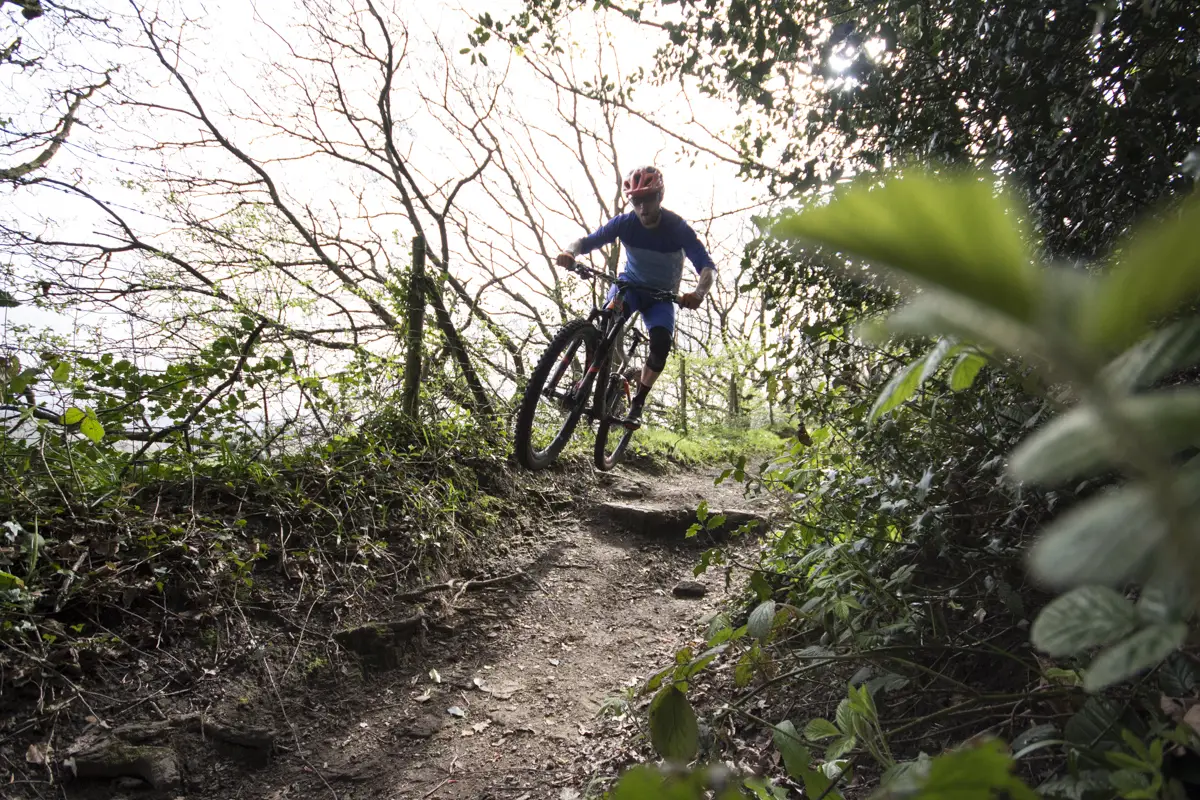
It’s this same suspension performance that results in the Trance being so planted on the descents too. Although I initially had reservations about the Trance’s technical capabilities for riding the steep and ugly stuff, it didn’t take long for the bike to prove me wrong. The stability of the Maestro suspension design means the bike’s dynamic geometry remains consistent even as you’re ploughing through the travel, so it never feels as if you have to wrestle with the bike’s front end. And with each thunk!, pop! and whallop! being managed by the buttery Fox suspension, the Trance affords you the chance to spend more time concentrating on setting up for the corner ahead.
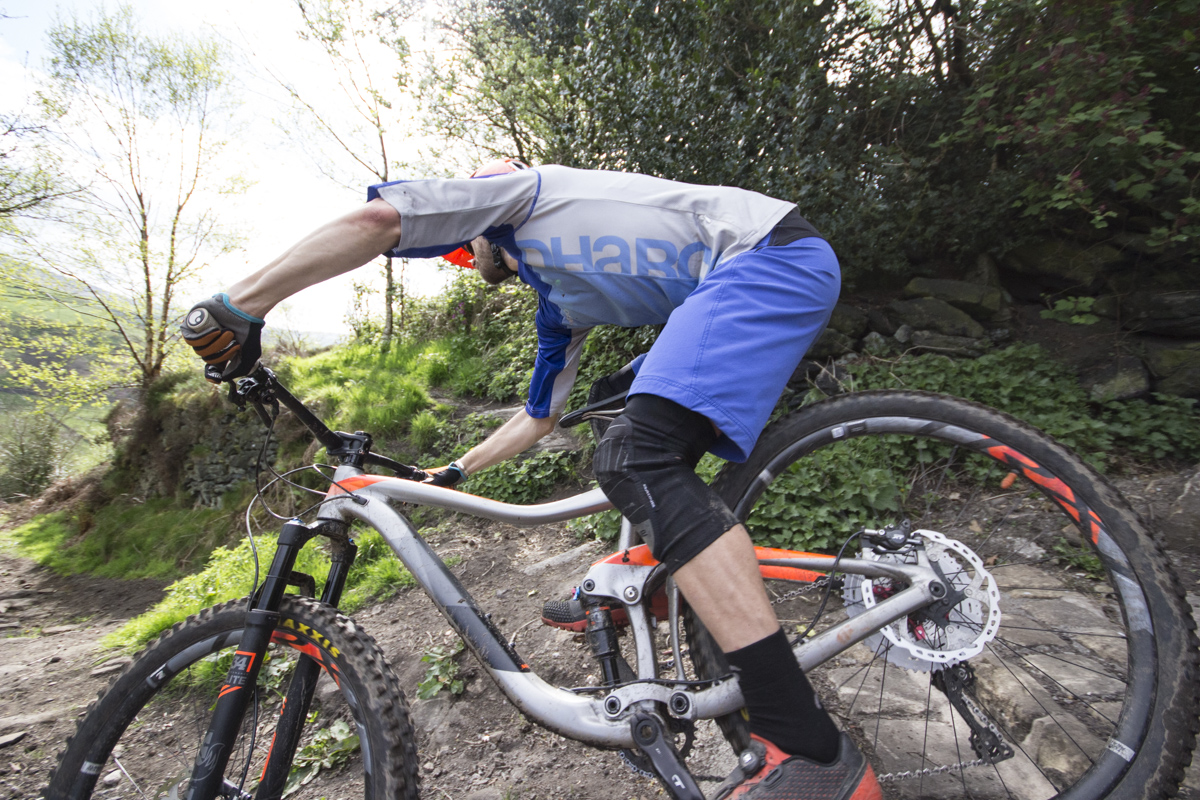
I did come towards the bike’s limits after facing up to much steeper trails in the woods – you know the ones where your bum spends more time on the rear tyre than it does on the saddle. In that kind of environment and on much faster straight-line natural stuff, a bike like the Reign is clearly a more suitable tool for the job, where a slacker head angle and longer front centre really come into their own.

Giant could surely achieve that added descending stability by lobbing another degree off the Trance’s head tube, as I reckon 66° would just give it a little more oomph for faster and woolier trails. and certainly after the first few valley rides on the Trance, I was wishing for a little more front-centre length in the chassis to cope with the off-piste trails. The more I rode the Trance however, the more I appreciated its lively handling everywhere else, so I’d be careful of wanting something much slacker. A geometry chip in the rear end like the MinoLink found in the Trek Fuel EX would be a great way of allowing riders to adapt the Trance’s geometry to their preference.
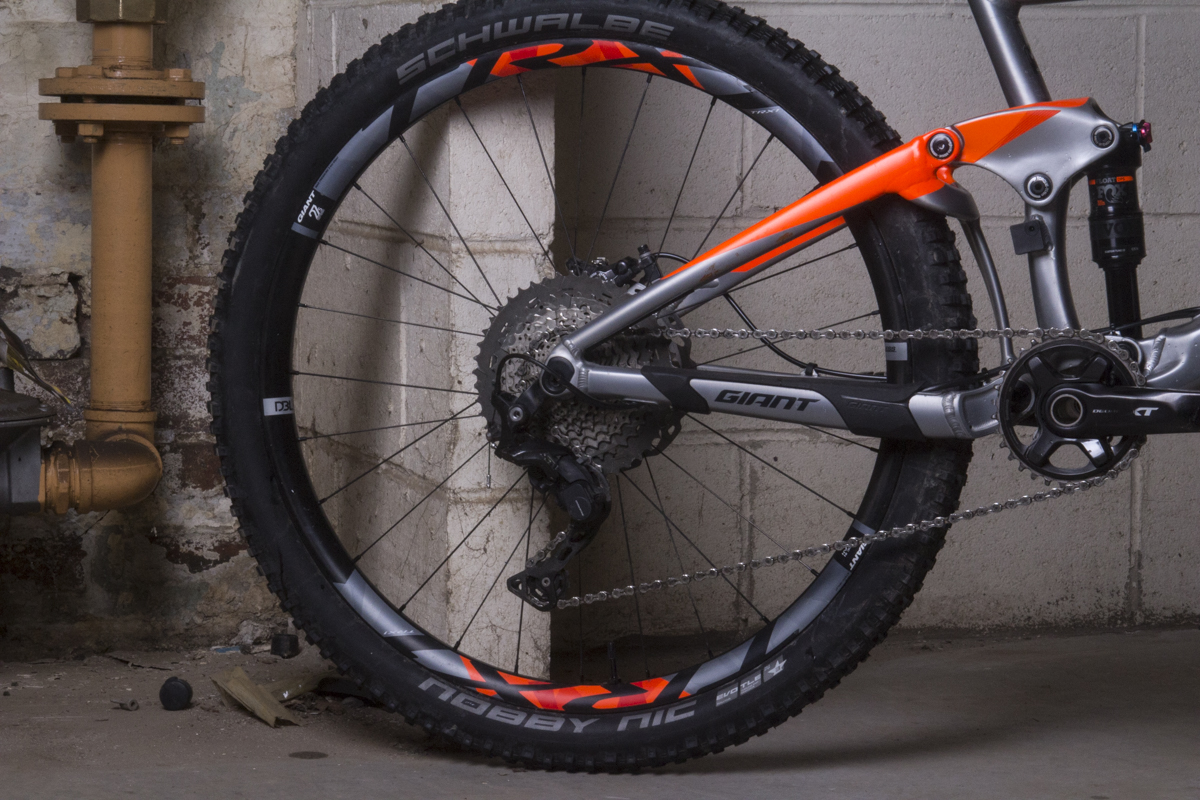
For everything but the steepest of gnar, there were very few faults to be found in the Trance’s capable handling package, and certainly fewer faults to find in the parts spec. The Shimano XT 1×11 drivetrain was mint, with no chain drops or mis-shifts that I can recall. I was happy to see the 11-46t block out back, which gives a decent climbing gear compared to smaller 11-speed cassettes.
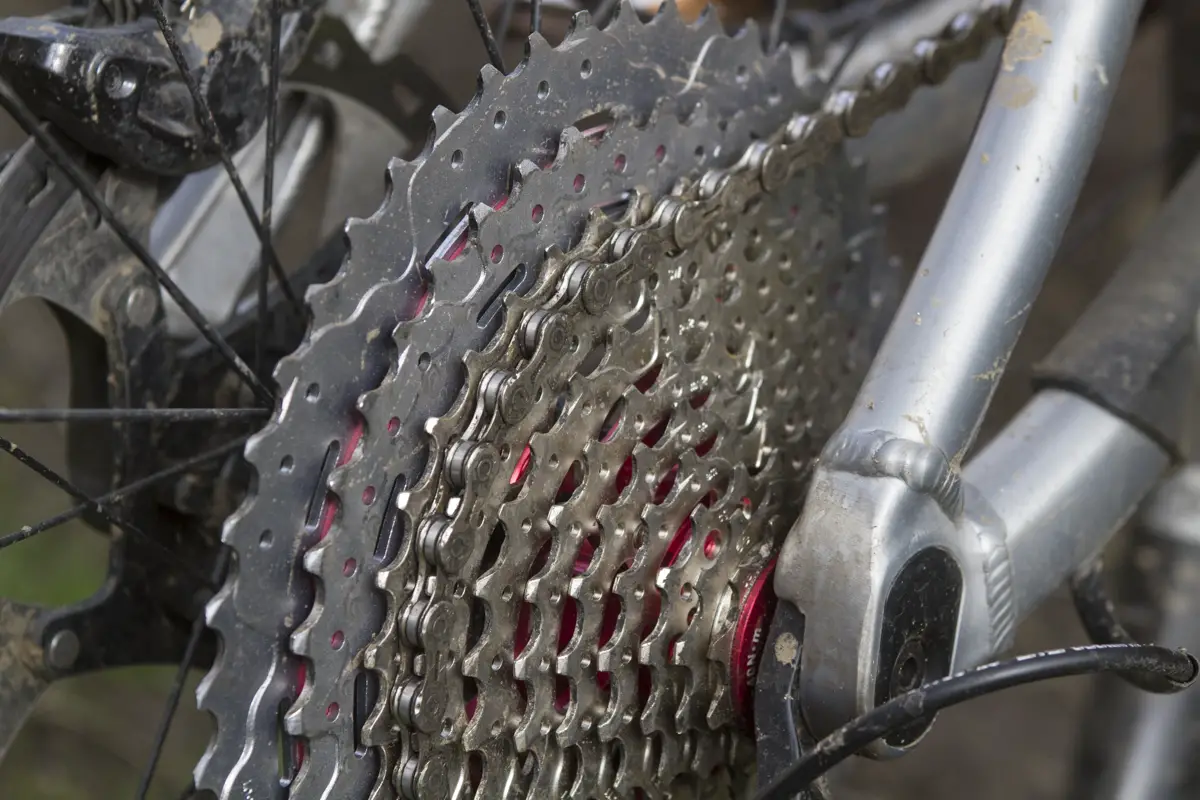
That said, I did also test an enormous 11-50t SunRace cassette on the Trance 1, which aside from providing tractor-pulling power, was surprisingly smooth with the medium cage rear mech. Look out for a separate review of the SunRace cassette in the near future.
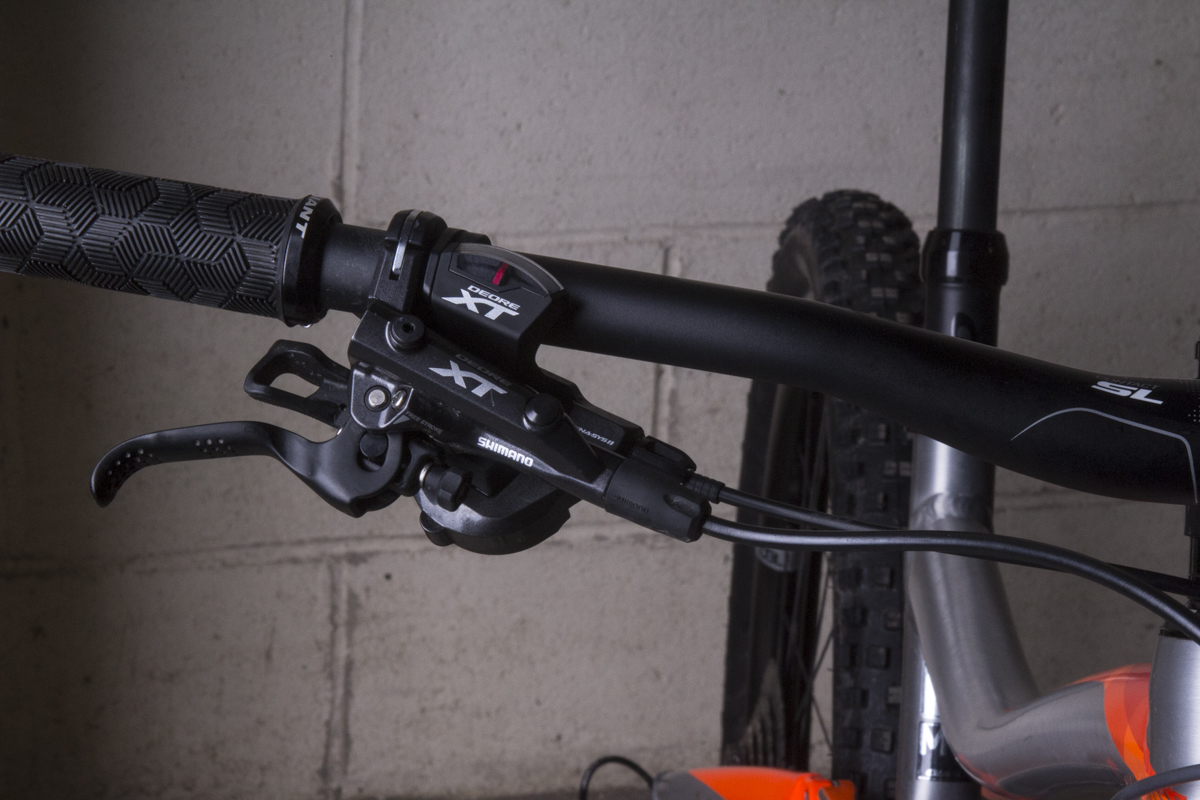
Likewise, braking was low-fuss, with the XT brakes giving a firm bite point from the textured alloy levers. Tools-free reach adjustment is nice, and power from the 180mm rotors was more than adequate for the type of riding the Trance is designed for. While I have experienced pumping-up of the lever feel on other XT and XTR brakes I’ve tested, there were no such issues with this pair.
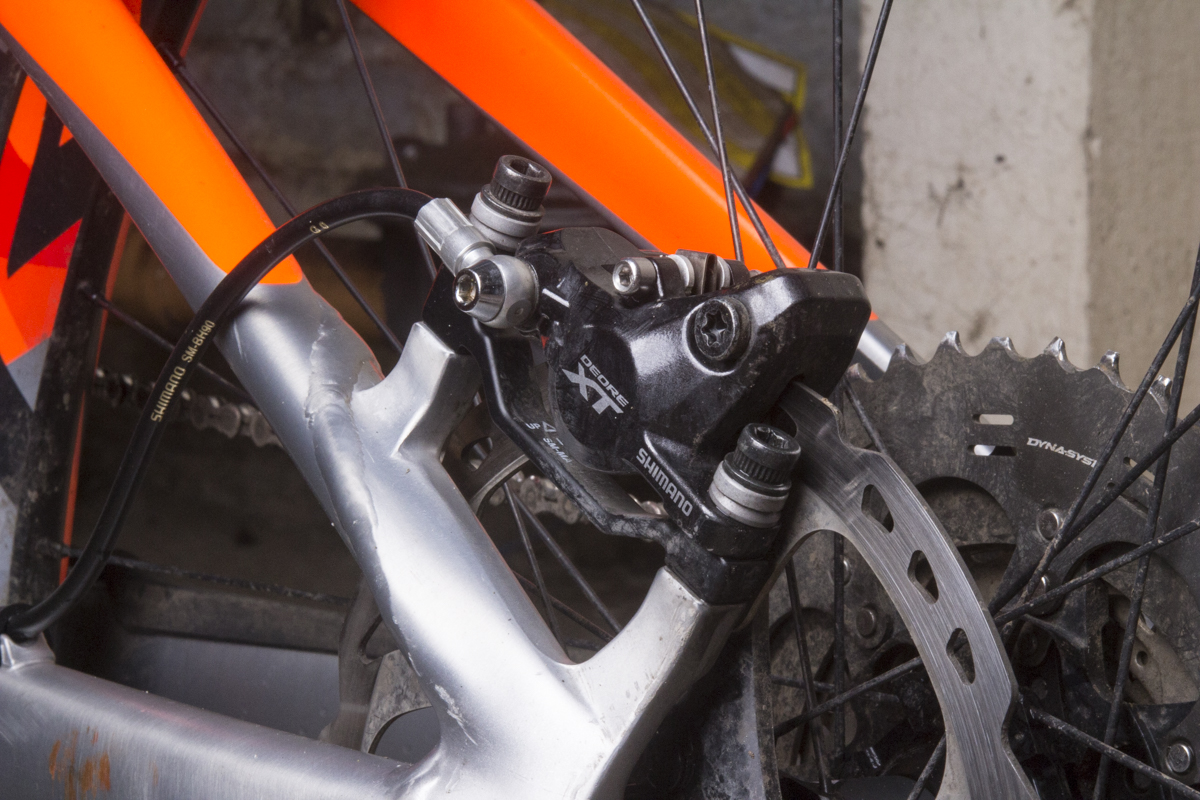
Durability Notes
For the winter and spring seasons I spent aboard the Trance 1, there were very few squeaks and groans that came from the smooth-rolling bike. The internal cable routing kept rattling to a minimum, and both the headset and bottom bracket remained noise-free throughout.
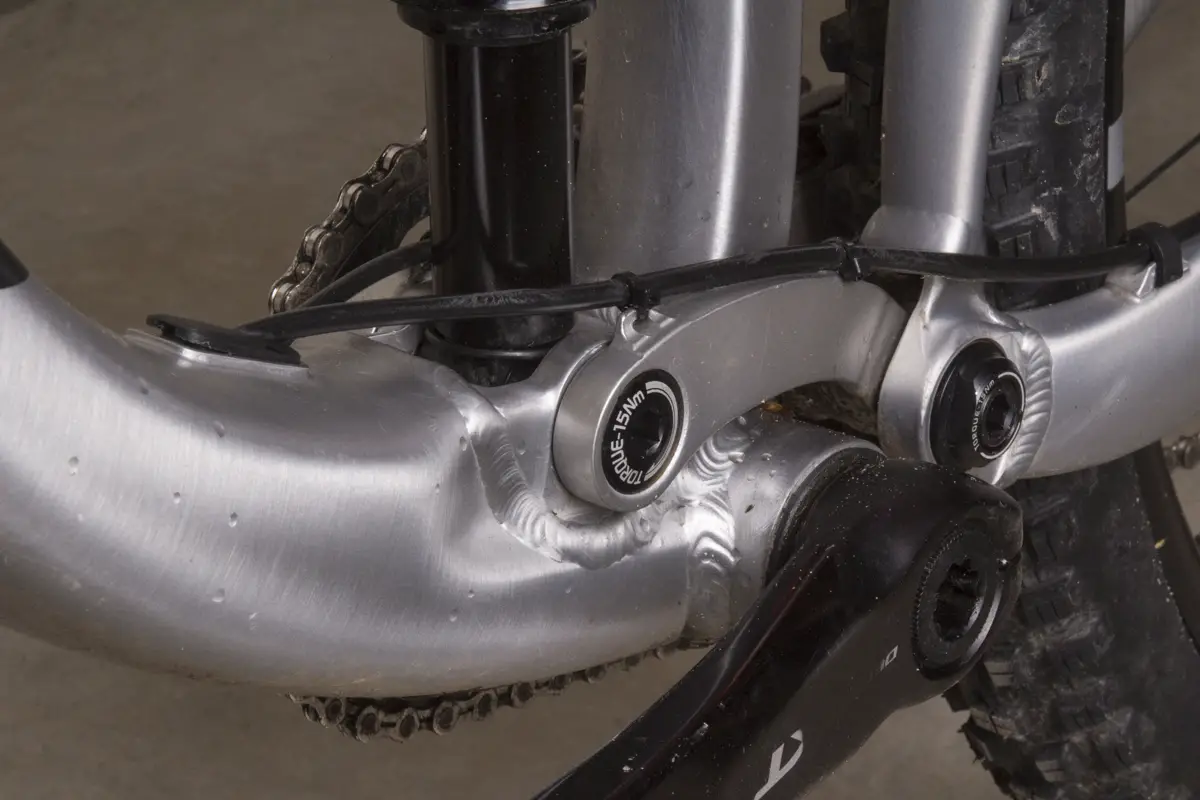
However, I did have to tighten the lower shock mount, after some knocking became apparent as the bolt had loosened. There are fewer pivots to worry about on the Maestro linkage compared to other four-bar suspension designs, but as usual, keep an eye on any moving parts and apply fresh Loctite if you happen to remove any bolts for whatever reason.
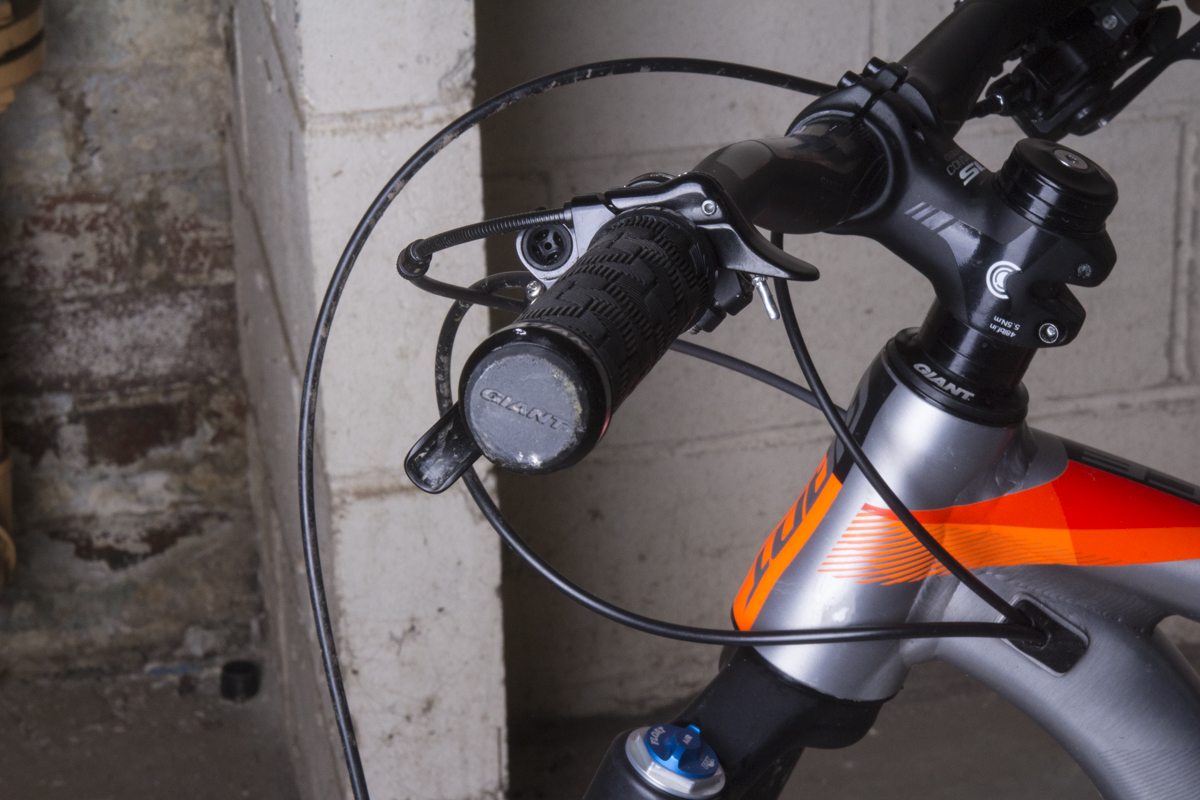
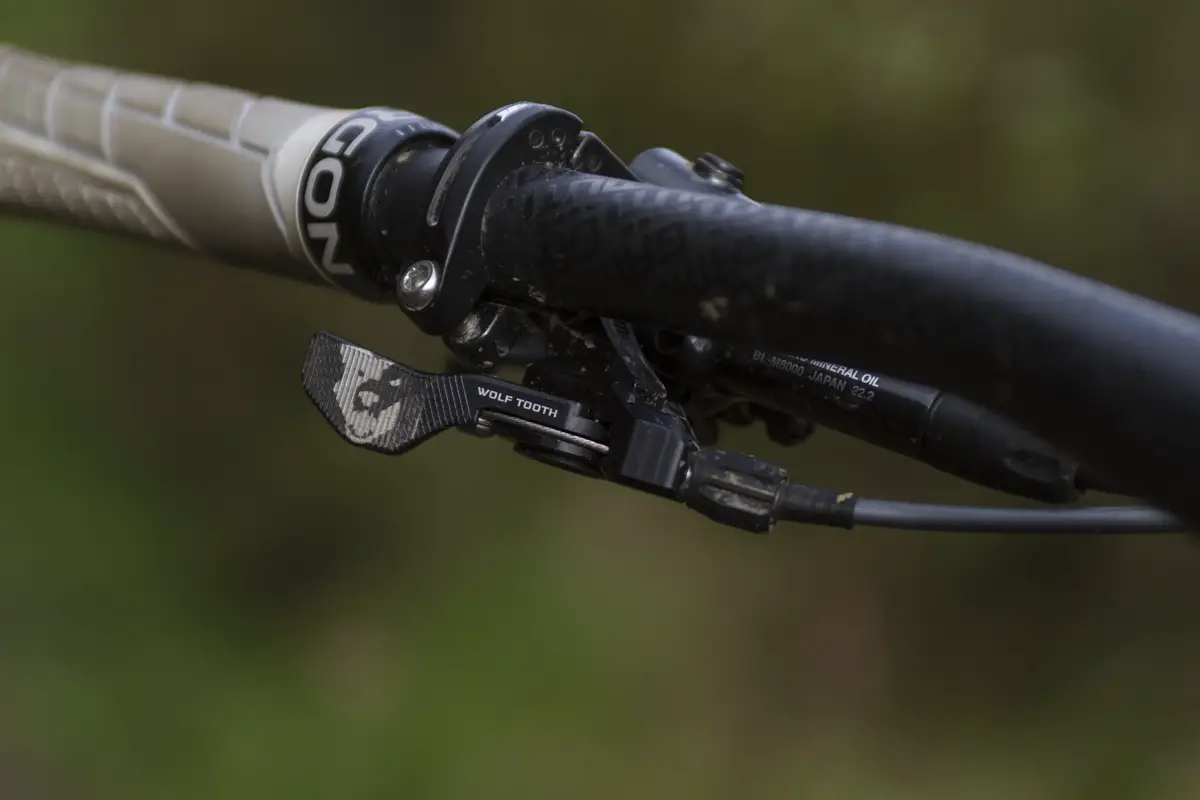
I did take issue with the Giant dropper post lever, which I’ve always found to be too small for intuitive operation. Because of the compact lever and the high torque required to activate it, it doesn’t take much cable contamination before it becomes significantly harder to push. For the latter part of the test period, I paired up the dropper post with a Wolf Tooth ReMote lever, which was night and day in terms of ergonomics.
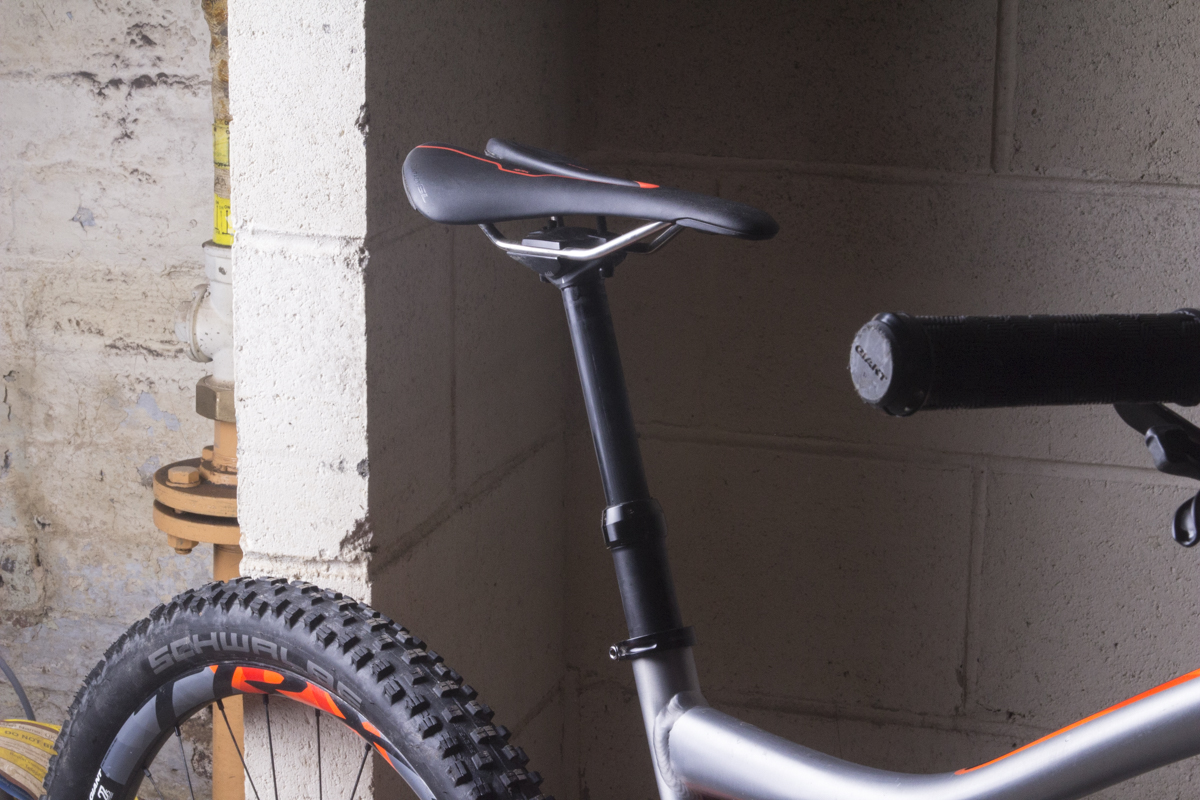
The dropper post itself went down the same path as other Contact SL Switch-R dropper posts we’ve tested. Using a similar construction as the Bontrager Drop Line we recently reviewed, the Giant design is also susceptible to the effects of wet and cold weather, with the action of the post slowing down significantly through the winter months.
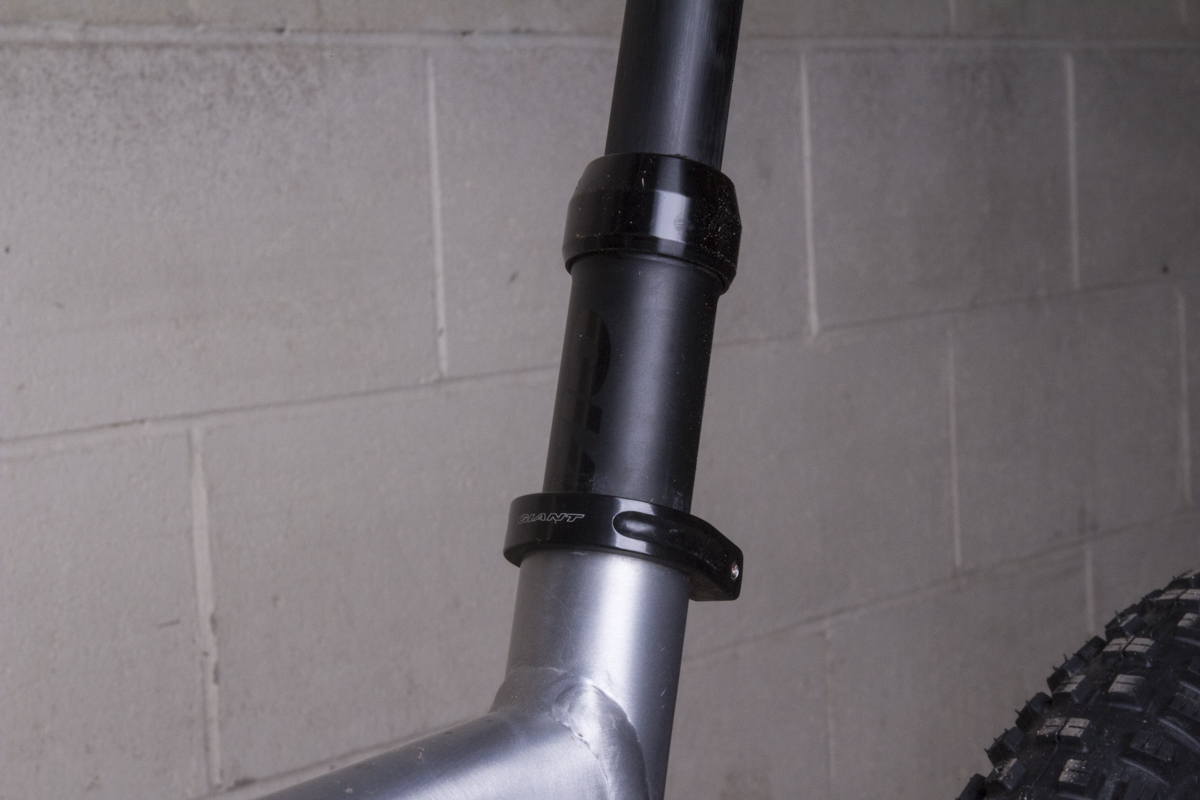
Removing the main seal and regreasing helps, but the post isn’t particularly well sealed in the first place, meaning water and contaminants can make their way into the guts of the post, leaving a metallic grinding noise and sensation as the post compresses and returns. The post also developed a decent amount of rotational play, which was accompanied by some knocking. We’d love to see improvements to the sealing for future Giant droppers, and I’d personally like to see Giant offer a dropper post with more than 125mm of travel too.
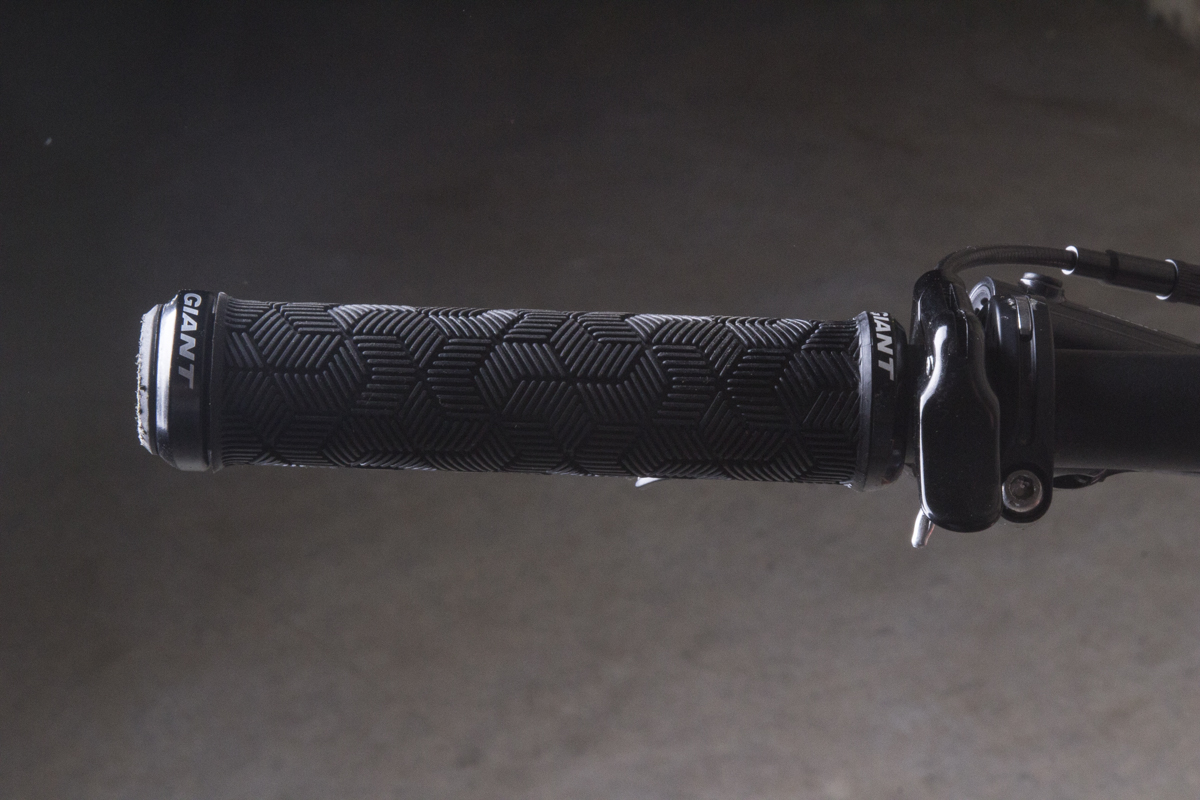
As for the contact points, I can’t say I’m a big fan of the Giant-branded lock-on grips, which are a little too flimsy in texture. The Contact SL saddle is adequate, but it is quite firm and narrow, so anyone aside from long-distance XC riders are likely going to find it uncompromising.
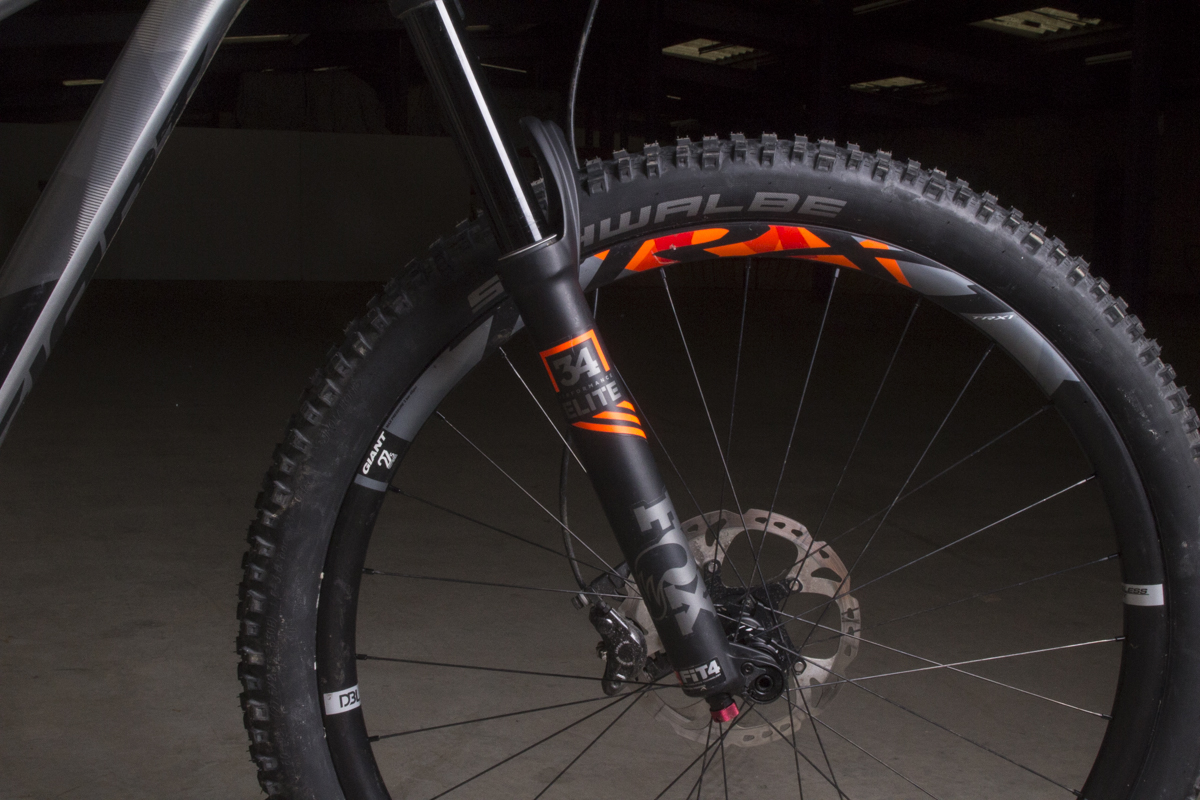
Those spec notes aside, I was really impressed with Giant’s own TRX carbon wheelset, which uses a hookless carbon fibre rim with a 27mm internal width. The rims offer a really tight tubeless seal, the wide-but-not-too-wide size makes them ideal for most 2.2-2.4in tyres on the market. The rims are plenty stiff, but big tyres and supple suspension mutes the effect of the rigid wheels – riding these on a hardtail would be a different story.
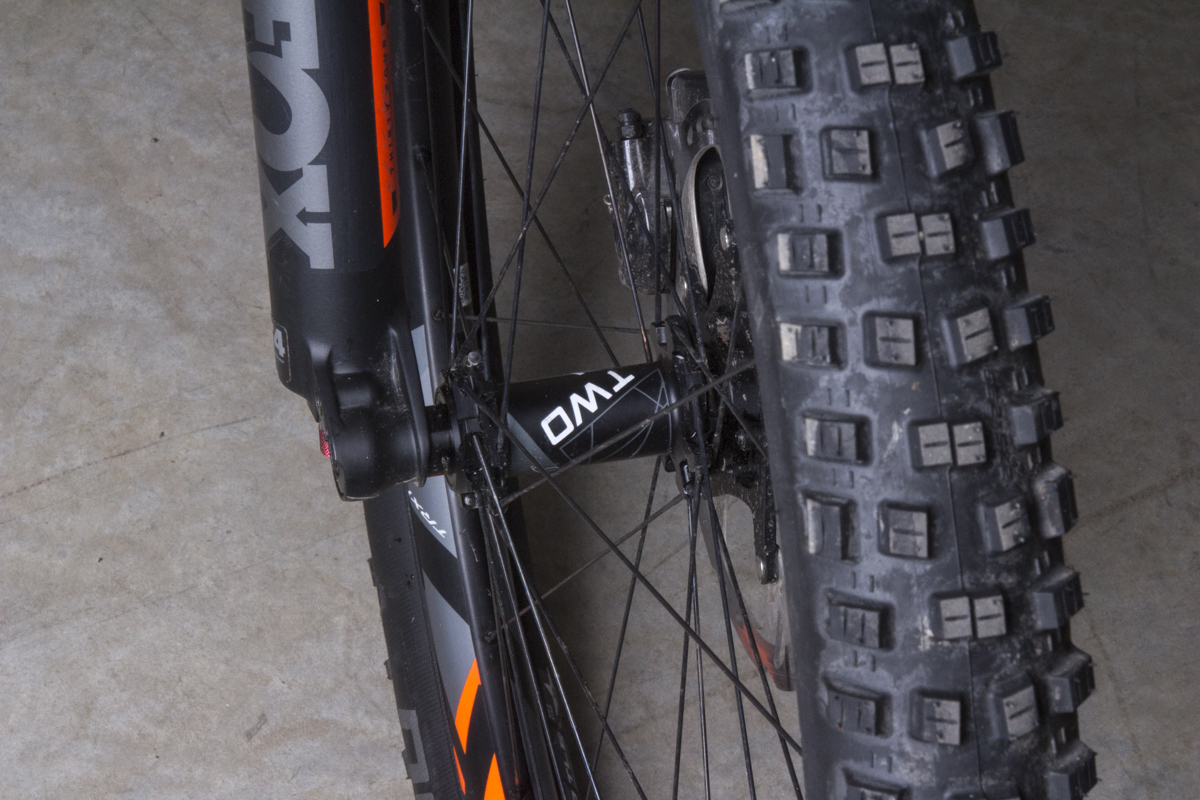
Out of interest, I stripped the wheels down to put them on the scales, and was blown away when I read them at 1649g for the pair. Given that they’re a wide wheelset built for trail riding, that’s impressive, and they’re a big reason why the Trance 1 is so lively and quick.
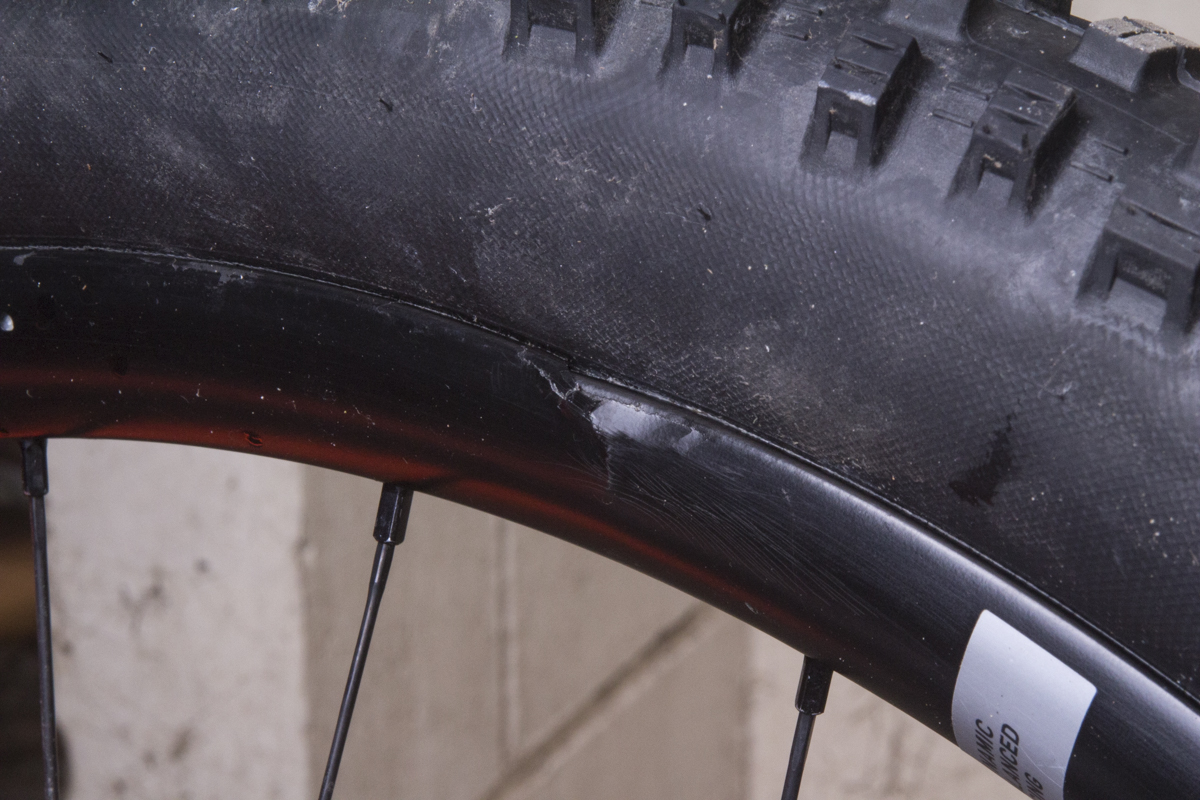
But while the wheels were otherwise immaculate, I did come a cropper at some point on the bike late in the test period, where a hard impact on the rear wheel caused a crack in the non-drive side sidewall. I didn’t actually know I’d cracked the rim until I changed the tyres over for a photoshoot, and discovered the small bulge on the rear wheel. The wheel had remained true despite the force of the impact, and without a puncture or any loss or pressure at the time, everything had seemed as normal.
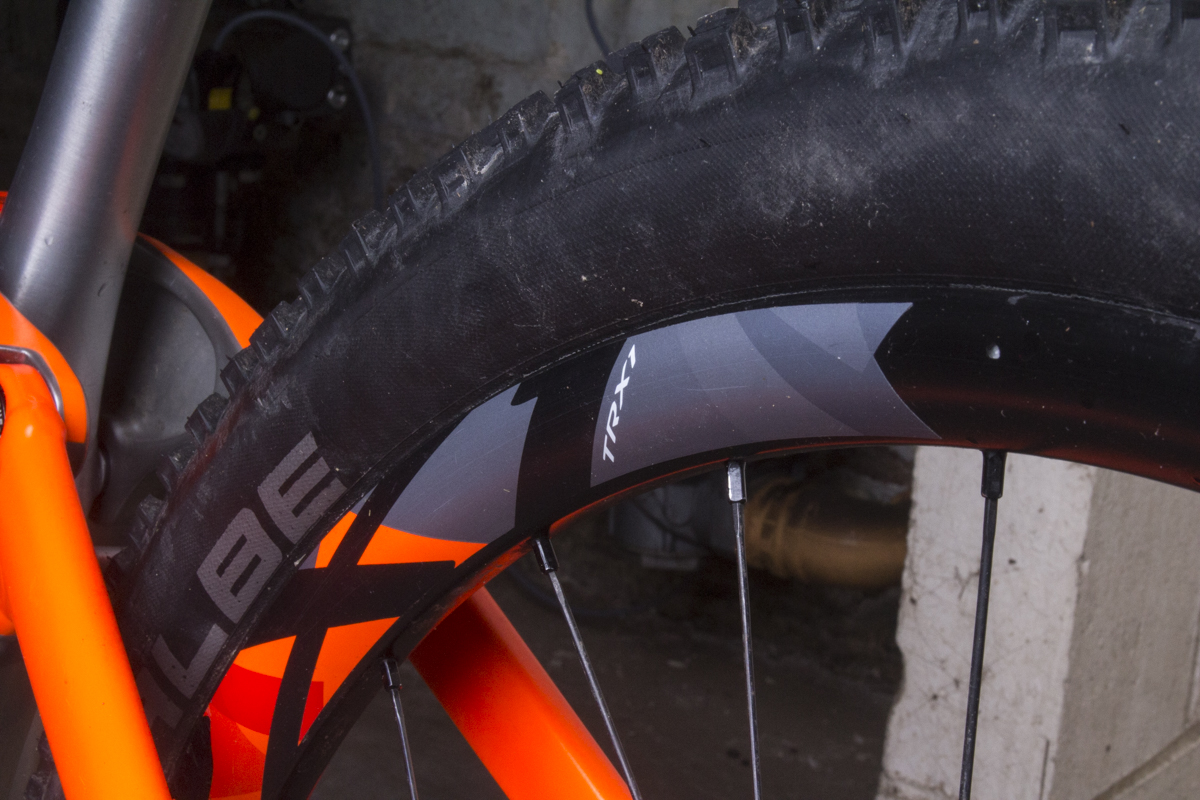
Would the rim have cracked if it was alloy? I’m not so sure. Having cracked a number of carbon rims in the past, I’d say that carbon generally has a higher strength rating than an equivalent alloy rim, but whereas an alloy rim will bend a sidewall, there’s no such compliance with carbon rims. The takeaway from this? Any wheel can still break, especially if you’re ploughing it into angry-looking rocks on a regular basis.
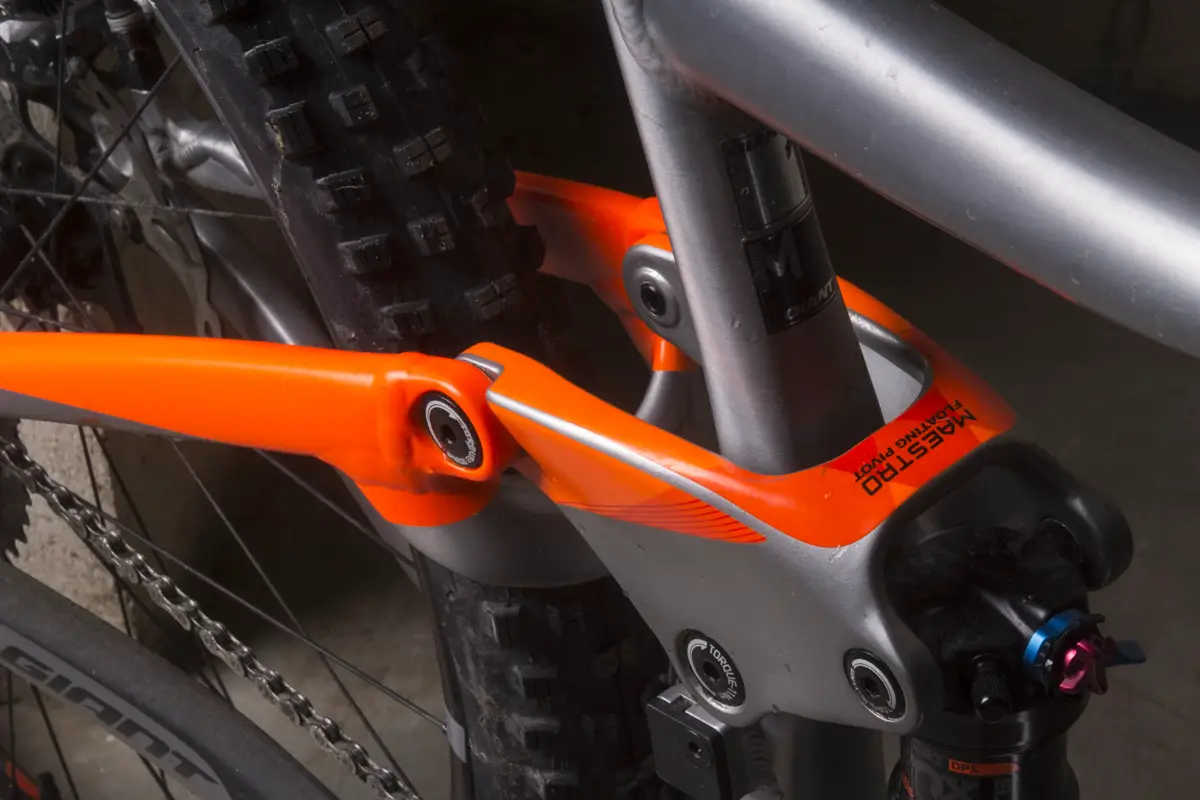
Three Things That Could Be Improved
- Bigger-er bars and a shorter-er stem please
- The Contact SL Switch-R dropper post could be improved in every way. It works, but not well.
- Adjustable geometry chip for a ‘normal’ and ‘rad’ head angle setting

Three Things What We Loved
- Super supple suspension that sucks up trail chatter like a Dyson
- Enthusiastic and sprightly glass-half-full handling
- The invisible Deore XT groupset. It’s quiet, efficient and smooth
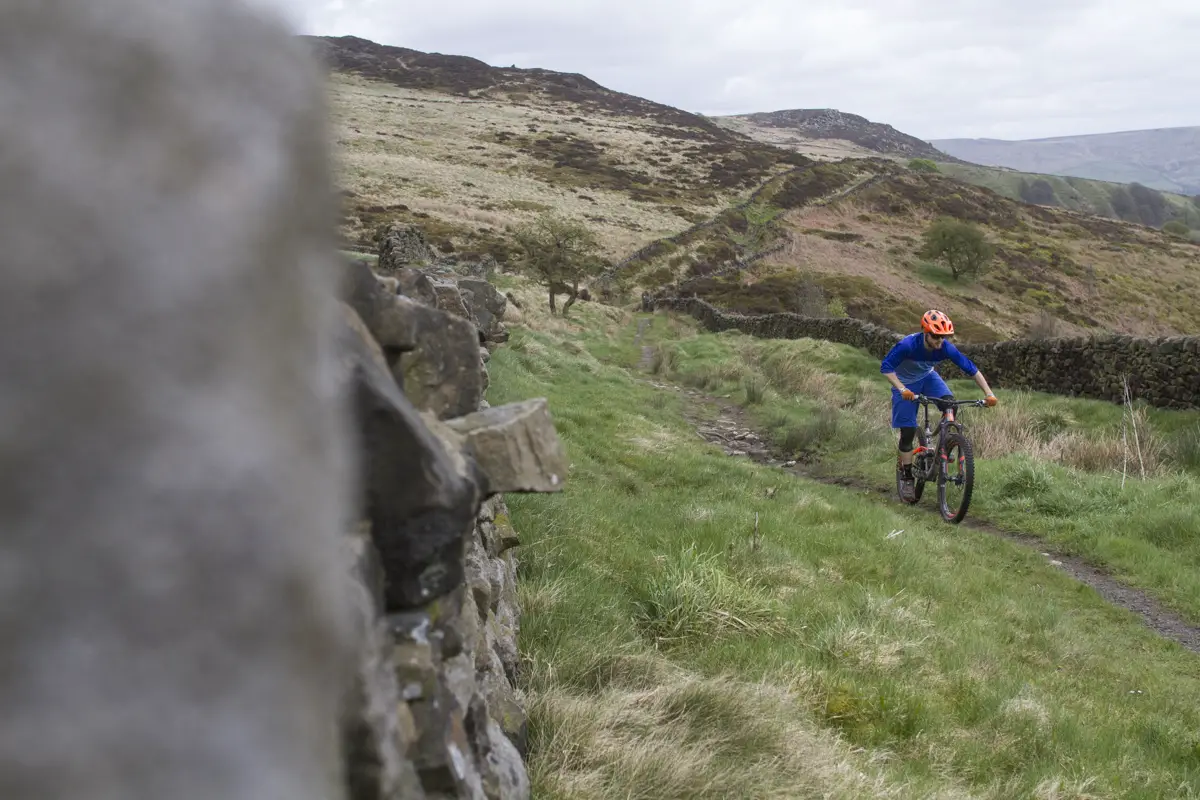
Overall
The more I rode the Giant Trance 1, the more I was pleasantly surprised by its technical capabilities and floaty suspension feel. It’s not radically slack and long like its contemporaries, but like many other great mountain bikes, it’s the real-world ride experience that reveals the Trance’s true ability – not some numbers on a geometry chart.
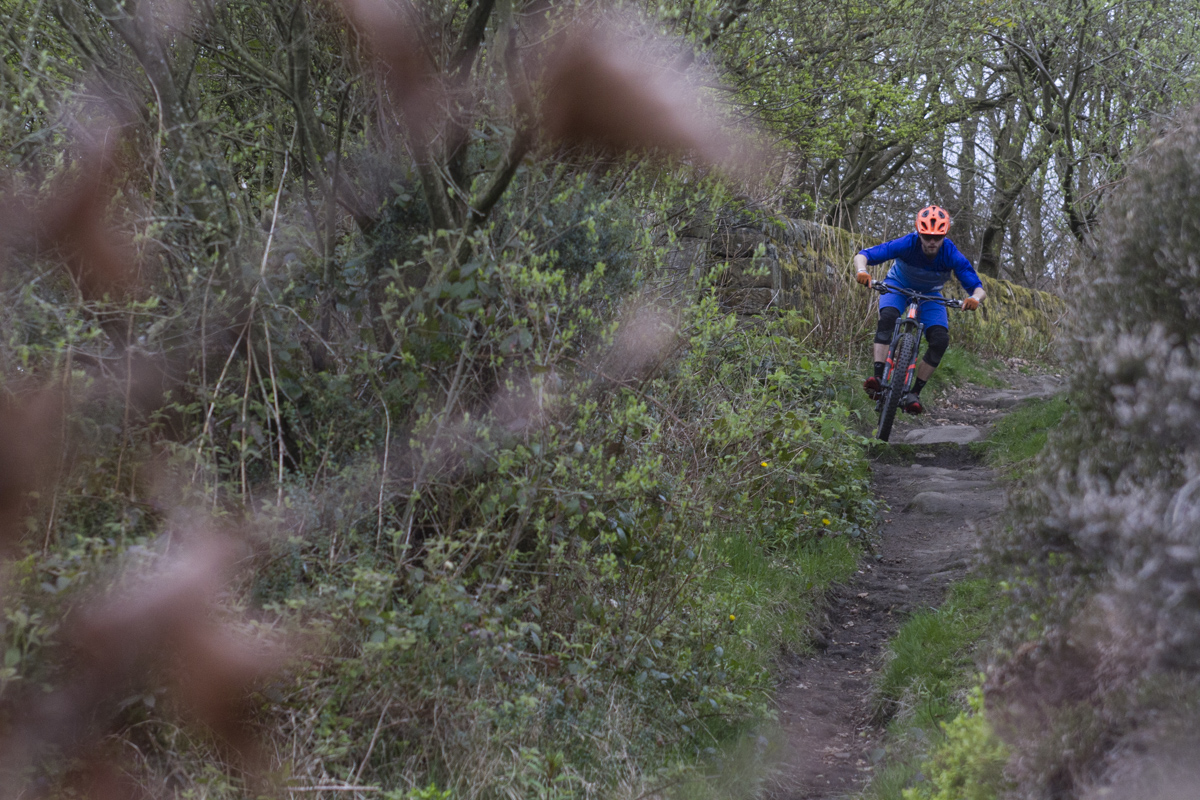
With its upright riding position and smooth Maestro suspension design, the Trance is a comfortable trail bike for map-crossing riders. It’ll happily plod along with its pilot in a seated position, where the active suspension will take care of all the bumps along the way.
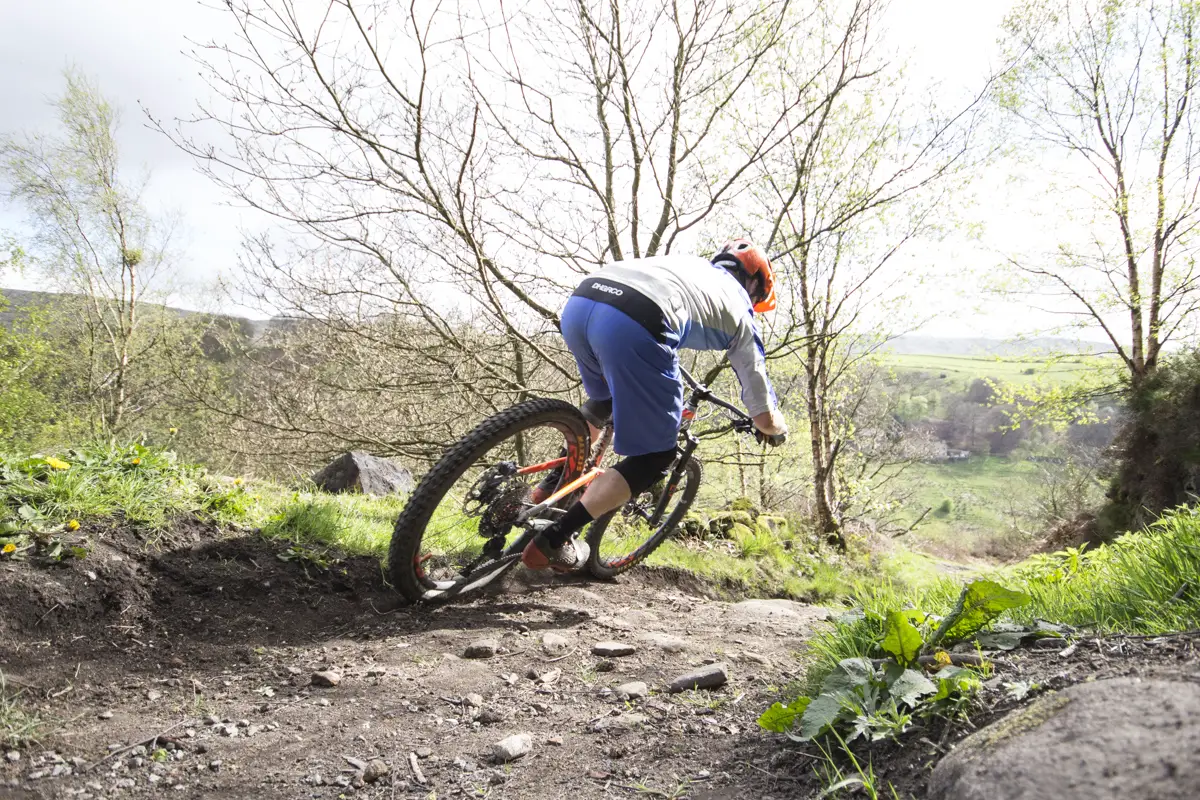
Get it onto more technical trails at speed however, and the Trance perks right up, with a sprightly disposition that’ll make you want to pop and ping your way down natural rutted-out singletrack. No, it isn’t as stable as some other trail bikes on the market that are built for the devotees of the slacker-than-thou church. Of course you can always upsize on the Trance to get more reach and a more stable front centre, but expect to lose some of the bike’s pizazz elsewhere on the trail.
If the Anthem is too light and spindly for you, and the burly Reign is too heavy and cumbersome, the Trance is your goldilocks ride. Want a fun, lively and comfortable trail bike for just plain mountain biking? The Trance 1 delivers.
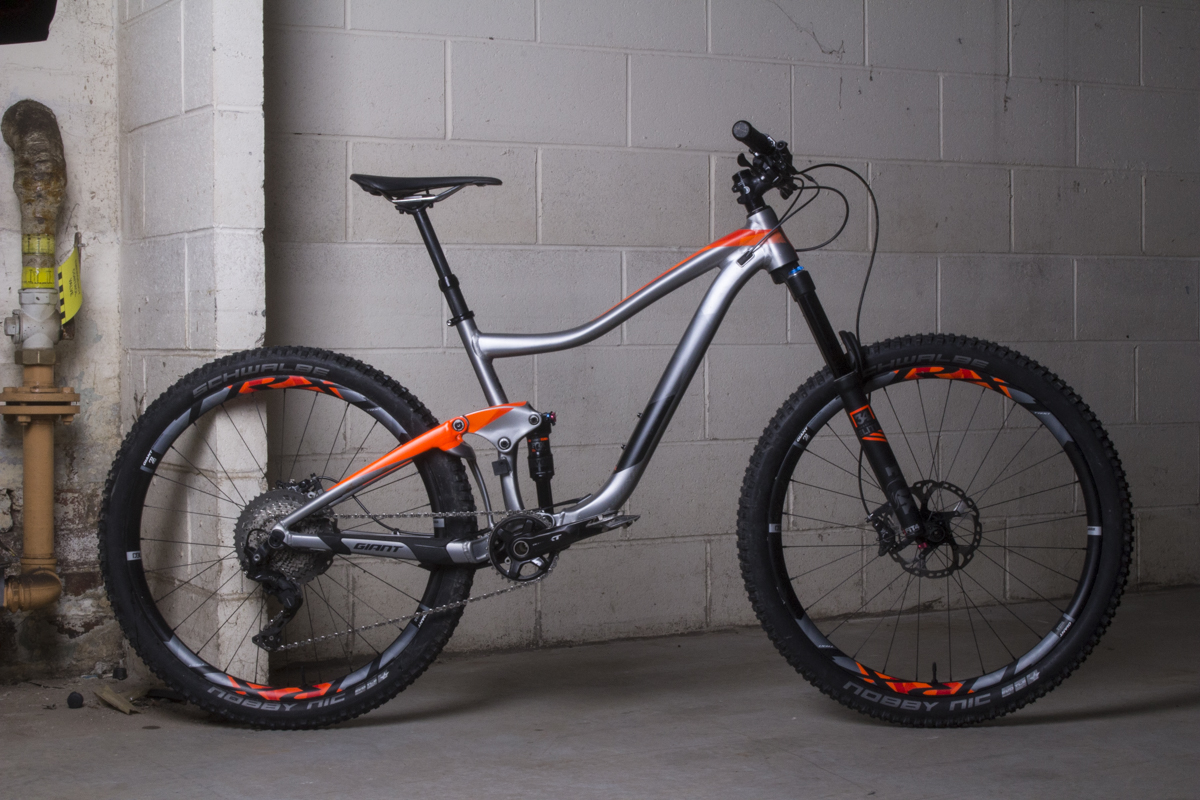
2017 Giant Trance 1 Specifications
- Frame // ALUXX SL-Grade Aluminium, Composite Rocker Link, 140mm Travel
- Fork // Fox 34 Performance Elite, 140mm Travel, FIT4 Damper, QR15
- Shock // Fox Float Performance Elite EVOL
- Wheels // Giant TRX, 110x15mm Front & 148x12mm Rear
- Rims // Giant TRX 27.5 Composite, Tubeless Ready
- Tyres // Schwalbe Nobby Nic 2.35in Snakeskin Trailstar Front & Nobby Nic 2.25in Snakeskin Pacestar Rear
- Chainset // Shimano Deore XT 32t
- Front Mech // N/A
- Rear Mech // Shimano Deore XT 11-Speed
- Shifters // Shimano Deore XT 1×11
- Cassette // Shimano Deore XT 11-46t 11-Speed
- Brakes // Shimano Deore XT 180/160mm Rotors
- Stem // Giant Contact SL 60mm
- Bars // Giant Contact SL Trail 750mm Width, 19mm Rise, 9×5° Sweep
- Grips // Giant Contact Lock-On
- Seatpost // Giant Contact SL Switch-R Dropper Post 30.9mm, 125mm Travel
- Saddle // Giant Contact SL, Neutral
- Size Tested // Medium
- Sizes available // X-Small, Small, Medium, Large, X-Large
- Weight // 12.37kg (27.21lbs)





